Bumper crowd at ADC Page 19
INCENTIVES KEY TO CHANGE
PAGE


WHAT’S YOUR NEXT STEP?
More family time?
Better labour efficiencies?
Improved cow health?
More quality milk in the vat?

For a future-proof automated milking system, proven on pastoral farms throughout Australia, GEA’s automated milking system – the DairyRobot R9500, is a proven step in the right direction.

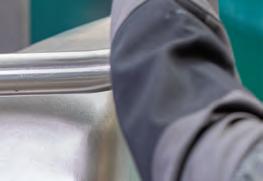



MARCH, 2023 ISSUE 149 // www.dairynewsaustralia.com.au NUTRITION UNDERPINS PRODUCTION PAGE 20 SILVER
A er a very wet three years, there appear to be signs of changing conditions ahead for central and eastern Australia. Climate models from the Bureau of Meteorology suggest La Niña may be over soon — though the impacts of its in uence may be longer lasting. More on PAGE 3
LINING
4
Photo: Storm clouds at Merimbula by Rene Martens
Looking for your next step? Call us for a free on-farm consult – 03 8877 9999.
JFC Milk
JFC Milk
Karts
Calf Feeding Made Easy
JFC Milk
Karts
Karts
Calf Feeding Made Easy
Calf Feeding Made Easy
WINNING EDGE

JFC Milk Karts are the most e cient way of feeding your calves
The JFC Milk Cart Range is the most efficient way of feeding your calves

Kart The JFC Milk Cart Range is the most efficient way of feeding your calves
340L JFC MILK KARTS
KARTS
WINNING EDGE JFC MILK CARTS ARE AVAILABLE IN TWO SIZES (170L + 340L)
WINNING EDGE JFC MILK CARTS ARE AVAILABLE IN TWO SIZES (170L + 340L)
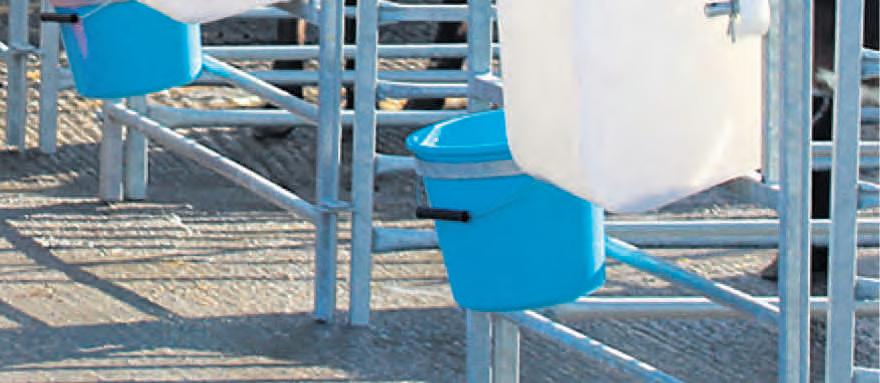
KARTS
The 340L JFC Milk Kart can mix 2 x 20Kg bags of milk replacer in just 4 minutes.
KART
THE JFC MILK CART ADVANTAGES ARE:
THE JFC MILK CART ADVANTAGES ARE:
✔ The 170L model can mix a 20Kg bag of milk replacer in just 4 minutes
✔ The 170L model can mix a 20Kg bag of milk replacer in just 4 minutes
THE JFC MILK CART ADVANTAGES ARE:
✔ EASY Transport of whole milk or milk replacer to calves
✔ EASY Transport of whole milk or milk replacer to calves
KART
✔ The 340L model can mix 2 x 20Kg bags of milk replacer in just 4 minutes
Our 340L model features an upgraded pump which can dispense up to 36 litres per minute.
✔ The 340L model can mix 2 x 20Kg bags of milk replacer just 4 minutes
This model also includes upgraded castor wheels, a new control box and dispensing nozzle.
✔ SMOOTH Vortex-enhanced mixing eliminates separate of nutrients/foaming of milk
✔ SMOOTH Vortex-enhanced mixing eliminates separate of nutrients/foaming of milk
✔ EASY Transport of whole milk or milk replacer to calves



✔ SMOOTH Vortex-enhanced mixing eliminates separate of nutrients/foaming of milk
✔ CONTROLLED amount of milk dispensed
✔ CONTROLLED amount of milk dispensed
Our 170L and 340L models features an upgraded pump which can dispense up to 36 litres per minute. This model also includes upgraded castor wheels, a new control box and dispensing nozzle. These features ensure faster milk delivery time when using the JFC Milk Kart with the pump.
✔ CONTROLLED amount of milk dispensed
These features ensure faster milk delivery time when using the JFC Milk Kart with the pump.
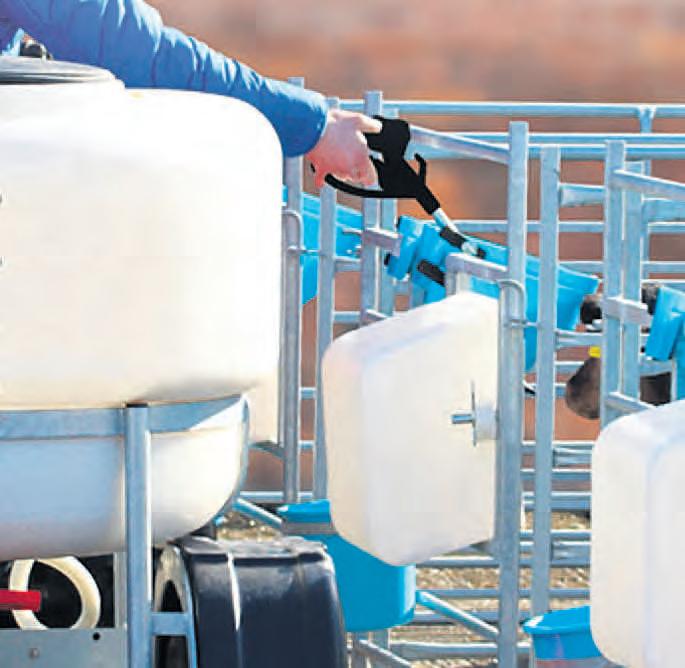
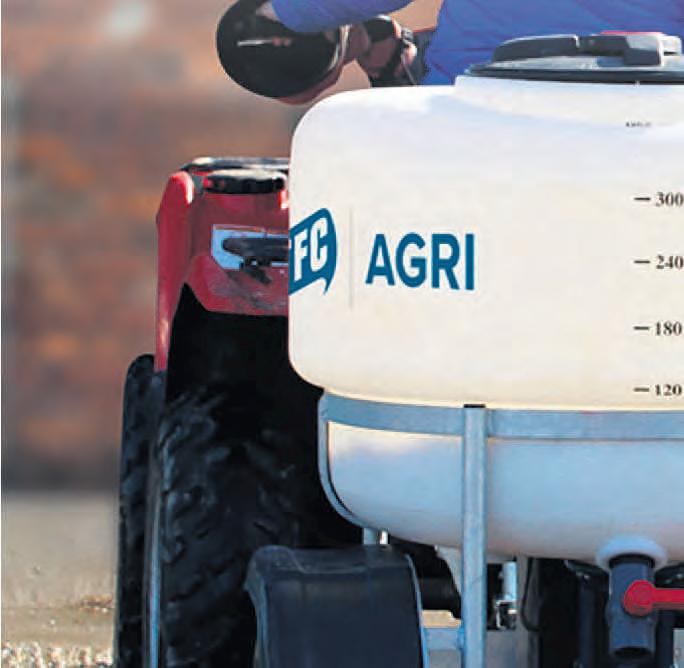
Rural for information:


Contact ProviCo Rural for information: www.provicorural.com.au, PH: 1300 380 343 email: admin@provicorural.com.au


Our 170L and 340L models features an upgraded pump which can dispense up to 36 litres per minute. This model also includes upgraded castor wheels, a new control box dispensing nozzle. These features ensure faster milk delivery time when using the JFC Milk Kart with the pump. Contact ProviCo Rural for information: www.provicorural.com.au, PH: 1300 380 343 email: admin@provicorural.com.au
PH: 1300 380 343 email: admin@provicorural.com.au
AGRI
AGRI
Contact ProviCo
www.provicorural.com.au,
AGRI
Kart
Rain, rain everywhere
BY ISABEL DANDO



THE WET conditions over most of Australia not only in recent months, but over the past few years, has proved there can be too much of a good thing.



While strong water availability suppresses water prices, rainfall over saturated soils has caused devastating flooding in almost every dairying region.
The good news is climate models from the Bureau of Meteorology suggest La Niña may be over soon, however, the impacts of its influence may be longer lasting.
After a very wet three years, there appears to be some sign of changing conditions ahead for central and eastern Australia.
A recent spell of dry weather in southern Australia has provided a much-needed moment of reprieve for several flood-affected regions. With the current La Niña event predicted to end sometime in the near future, this will bring a welcome change for many, despite being a key driver of continually improving water availability over the past three years.
Over this time period, strong water availability has led to temporary water prices falling significantly and remaining below long-term averages.
Water levels in all monitored water storages across northern Victoria and the NSW Murray have reached 100 per cent capacity, or are being actively managed through controlled releases.
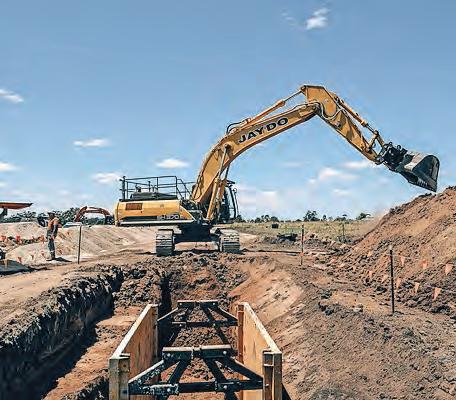
With such an abundance of water available, temporary water prices from both the northern

Cereal hay prices by region January 2023 vs January 2022
Victoria and Murray Irrigation systems sit 95 per cent and 98 per cent below January 2020, respectively.



Additionally, seasonal determinations have reached 100 per cent across northern Victorian systems so far this season, boding well for water availability and pricing moving into the 2023-24 water year.


While the above average rainfall has supported such strong water availability, it has also caused repeated flood events over the past 12 months.
Occurring throughout numerous dairying regions, this brought varied impacts to feed markets across the country and saw hay prices rise significantly post-harvest, as expected.

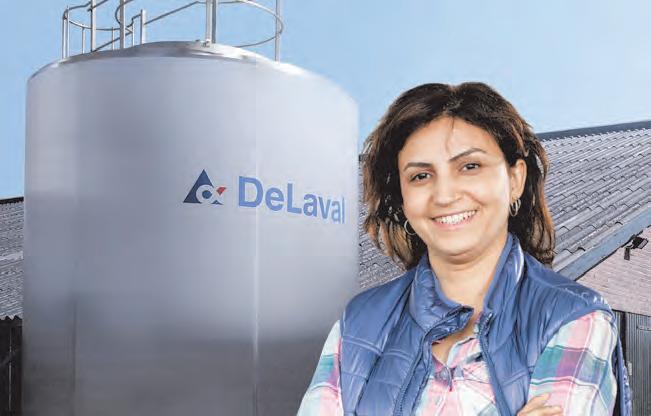
With many farmers unable to produce home-grown feed during this time, there is currently higher than usual demand for purchased feed.
Fodder prices showed the greatest increase between December and January, as damages and needs became clearer.

In other regions, however, good pasture growth under irrigation is helping to mitigate reliance on purchased hay, keeping prices stable in these areas.
Fodder was not the only feed type affected by the floods, with grain harvest delayed and yields in jeopardy.
After initially rising in the lead-up to harvest, grain prices have fallen with strong yields recorded in some areas.
While this is a typically seen at this time of year, such declines have been relatively marginal due to strong international demand for Australian grain.
This is despite substantial quality downgrades to most harvested grain – a result of the wet weather conditions.

Fertiliser continues to wait for changes in the global supply and demand environment. Global indicative prices for both diammonium phosphate and urea fell over the past month, with urea recording the most marked decline of 17 per cent.
At the current time, this has largely been a result of quieter demand from buyers around the world and increased production coming out of Europe after a slow few months. However, despite prices continuing to trend down over the past few months, they remain well above long-term averages.
China continues to limit its fertiliser exports and continued conflict in Ukraine still weighs on product availability.
As such, a material and sustained decline in domestic prices here in Australia is unlikely in the short-term.
Despite some changes within the input markets, grain and fertiliser prices continue to sit above longer-term averages, with fodder now joining in.
Rising input costs continue to provide challenges on-farm, and the addition of adverse weather conditions to contend with doesn’t assist.

NEWS 4–22 PASTURE FEATURE 23–30 ANIMAL HEALTH 31 MACHINERY & PRODUCTS 32–35
Big sale for Swiss misses PG.8
Investing in future leaders PG.15
Pipeline in the pipeline PG.32
Jan-23 ($/tonne) Jan-22 % change Atherton Tablelands (pasture hay) 350 21% Darling Downs 358 38% North Coast NSW 388 69% Central west NSW 276 38% Bega Valley 347 22% Goulburn/Murray Valley 305 61% Gippsland 327 54% South West Victoria 305 52% South East SA 360 71% Central SA 335 63% South West WA 286 4% North West Tasmania 266 8%
// 3 DAIRY NEWS AUSTRALIA MARCH 2023 NEWS UPGRADE YOUR MILKING ESSENTIALS? IS I T T I M E TO delaval.com Talk to the Upgrade Specialists 1800 817 199 If you’re thinking of upgrading, there is only one team that have you covered at every stage of the process from milking systems, to cleaning, teat sprays, cooling and storage.
With many farmers unable to produce homegrown feed due to difficult weather conditions, there is currently higher than usual demand for purchased feed.
Incentives are key to change
BY RICK BAYNE
AUSTRALIAN FARMERS can be part of the climate solution but they need policies to encourage them, according to a visiting greenhouse gas guru.
Frank Mitloehner, a professor in the Department of Animal Science at the University of California, told a ‘Rethink Methane from Agriculture Production’ event hosted by Food & Fibre Great South Coast in Warrnambool on February 10 that farmers shouldn’t have to go into the red to become green.


Dr Mitloehner believes there are good opportunities for farmers to contribute to climate change mitigation efforts, but policies and political support are needed to incentivise them.
“These things can cost money,” he said.
“In California, farmers reducing methane are supported by the public sector. It’s not just cost neutral, but they are making money.
“They become more green and they stay in the green — if they go into the red, they wouldn’t do it.

“The goal should be to reduce methane. When we do that, we become part of the climate solution because we reduce warming.”
Dr Mitloehner, who specialises in measurement and mitigation of airborne pollutants from livestock production and is known as a greenhouse gas guru, said farmers “take an unfair hit” over their impact on climate change.
“We need farmers as much as we need doctors and nurses — that’s why farmers deserve a fair shake,” he said.
“Without farmers, there’s no food.”
Dr Mitloehner said methane, mostly produced by livestock burping and from their manure, is a greenhouse gas that warms the planet and “has a potent punch to it”.
However, he said there were others aspects to methane that should be considered.
“Unlike other greenhouse gases, methane is not only produced, it is also naturally destroyed in about a decade.
“Because of that, methane is a short-lived climate pollutant, which is different to CO2 and that’s why we need to re-think it.
“Methane has a lifespan of about a decade whereas CO2 carbon dioxide, which is the main greenhouse gas in the world and largely associated with fossil fuels, has a lifespan of about 1000 years.
“Other greenhouse gases are climate pollutants with long life spans, but methane has a short lifespan and that means the way it warms the planet is different.”
Dr Mitloehner said farmers would continue to increase their methane output if they grew their herd without instigating changes to cut emissions.
“If you hold your herd constant, because methane is not only produced but also naturally destroyed, you are adding constant warming, no additional warming,” he said.
“But if you reduce methane, then you are reducing warming. If you are learning how to manage methane and reduce it, then you are part of the climate solution.”
Dr Mitloehner said he was confident new initiatives would lead to reduced emissions and that farmers would be keen to adopt progressive practices if supported.
“There are different ways to reduce methane emissions in managing animals, how we graze land and how we feed animals.
“There are feed additives that will reduce enteric methane and there are new strategies on breeding for low-methane producing cows.
“Just like some people produce a lot of methane and others produce less, it’s the same with cows.
“Within each breed, there are low methane-producing cows. Now we know that methane is an inheritable trait, we can breed for it and that could lead to a 30 per cent reduction in burping.”
There are other new technologies, such as the use of a capsule that can be put in cows’ rumens that slowly releases an active ingredient to reduce methane, and there is work happening in New Zealand on a methane vaccine.
“We’ve got to find a way to make this work,” Dr Mitloehner said.

While he previously worked in Queensland, this is Dr Mitloehner’s first speaking tour in Australia. He also presented in Perth.
Also presenting in Warrnambool were Nicon Rural Services director and consultant Cam Nicholson and Dairy Australia regional climate adaptation lead Paul Tyson.
Food & Fibre Great South Coast deputy chair and dairy farmer, Oonagh Kilpatrick, said she hoped the event helped to broaden understanding of the role of ruminants in the environment.
“It is essential for us as producers to understand our impact on the world we live in, and embrace skills like resilience, innovation, and adaptability in the coming years,” she said.
“We are a transparent sector, playing our part not only to provide world class food, but to do so sustainably — after all we are fellow consumers and take our role as natural resource stewards seriously.”
EFFLUENT PRODUCTS



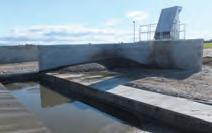





SEPARATE FOR EFFICIENCY

Yardmaster® has the widest range of Separators in NZ. These are commonly used in effluent systems where by removing solids the resulting ‘green water’ can be managed more efficiently as well as the resulting solids being a valuable reusable resource for soil management.


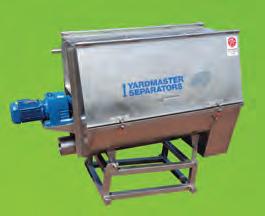
Your DPS Dealer can advise which Seperator is right for you.
 Dr Frank Mitloehner says policies and political support are needed to encourage farmers to make changes to reduce their greenhouse gas emissions.
Dr Frank Mitloehner says policies and political support are needed to encourage farmers to make changes to reduce their greenhouse gas emissions.
4 // DAIRY NEWS AUSTRALIA MARCH 2023 NEWS
About 100 people attended the Rethink Methane from Agriculture Production forum in Warrnambool in south-west Victoria.
6 Ashenden St, Leongatha, Victoria PHONE +61 3 9739 6521 www.dairypumpingsystems.com.au
Supported by a Nationwide Dealer Network
Time to divest: Saputo


 BY JEANETTE SEVERS
BY JEANETTE SEVERS
DECISIONS HAVE been made about the dairy processing plant at Maffra, in south-east Victoria, that formed part of the sale of Murray Goulburn's assets to Saputo Dairy Australia more than five years ago.
The Maffra plant will be divested of assets that can be used elsewhere, then the property will be sold.
Saputo Dairy Australia CEO Lino Saputo Jr confirmed the future of the Maffra plant in an interview with Dairy News Australia on February 16.

Saputo is concentrating on manufacturing high-value dairy products based on consumer and customer demand, which is shaping the future focus for the company’s Australian assets.
In addressing the issue of what to do with the Maffra plant, Mr Saputo indicated he would be investing in expanding existing production facilities, rather than building new green site factories.

“Australia already has too much steel in the dairy industry,” Mr Saputo said.




Instead, he said, the company was investing $20 million to expand the Smithton processing facility in Tasmania, to produce frozen natural cream cheese — a high-value product sought by the food service sector.
Frozen natural cream cheese was one of the Saputo products manufactured at Maffra.


“Saputo is committed to the Australian market and is investing in products that give a high rate of return for every litre of milk,” Mr Saputo said.



“It’s important to us to have the supply and processing network, but we also have to make some tough decisions about where to invest.
“Tasmania is a great dairy producing region, and there’s enough supply of raw material to value our investment in Smithton.
“We’ll continue to manufacture low-value products like powdered milk, and focus on increasing our supply of high margin value products for our domestic and export market.”
The silos and other equipment at Maffra will be used in other facilities. Among the facilities likely to benefit from further investment are those at Cobram, Smithton, Kiewa and Allansford.
“A number of our plants that are currently set up for us to invest in offer a great platform for expansion,” Mr Saputo said.

“Cobram, Allansford, Smithton and Kiewa are some of these assets which allow us to invest for expansion. Kiewa has a great platform for producing yoghurt.
“The first priority at Maffra is to extract the value equipment, moving them to other plants over time.

“The silos, pasteurisers and separators can all be used in other facilities.



“Once we’ve taken the value out of the Maffra site, we’re considering selling the site.”














Dairy News Australia understands the contract of sale between Murray Goulburn and Saputo Inc included a clause that prevented the Maffra asset from being disposed of until early 2023. That time period has now concluded.
PROCESSOR INVESTS IN TASSIE PLANT
Lino Saputo announced on February 16 that the international dairy processor and food manufacturer will invest $20 million in its Smithton (Tasmania) plant.
The new facilities will enable expansion of the frozen cream cheese product highly-sought by hospitality and food service businesses. The cream cheese is a product of frozen milk fat solids.

As a high value product, frozen cream cheese is added to soups, sauces, dips, casseroles and adds flavour to cakes and biscuits.
“The new plant will be up and running by spring 2023,” Mr Saputo said.




Mr Saputo is in Australia this week and made the announcement after a meeting with staff at the Smithton plant in Tasmania.
He said the investment was a reinforcement of the company’s faith in the dairy industry in Australia, and especially in Tasmania.
“We’re confident our dairy farmer suppliers in Tasmania can meet the demand for product in our facility at Smithton," he said.

“We’re delighted about our platform in Australia. We have enough suppliers among our milk pool to meet our commitments to our customers and clients.

“We value our milk suppliers in Australia and we will do what we need to, to hold onto them.”
 Saputo chief executive officer Lino Saputo on the site of the new, expanded, manufacturing facility at Smithton. Building and fit out will be completed by spring 2023, in time for new season milk.
Saputo chief executive officer Lino Saputo on the site of the new, expanded, manufacturing facility at Smithton. Building and fit out will be completed by spring 2023, in time for new season milk.
// 5 DAIRY NEWS AUSTRALIA MARCH 2023 NEWS Did you know, your dairy farm can be far more profitable just by having BETTER SOIL? The RESTORE™ Soil Health Program brought to you by: Find out how much with this FREE estimator Proven results, grounded in science: ● Increase productivity and
Reduce input costs. LESS WATER* 39% 23% LESS NITROGEN* 51% MORE PASTURE* *Based on large-scale case studies.
Saputo’s dairy processing factory at Maffra (in the background) will be divested of its assets.
●
Genetics provide solutions
THE DEMAND for a genetic solution to improve the profitability of bobby calves and animal welfare in the dairy industry is increasing in the wake of Fonterra New Zealand ordering its dairy farmer suppliers to stop killing bobby calves, according to a bovine genetics company.
From June 1, Fonterra New Zealand farmers must now raise bobby calves for beef, slaughter them for calf-veal or the pet food market.
The processor’s Australian arm has no plans to bring in similar rules, but Fonterra Australia Farm Source director Matt Watt said animal wellbeing “for all animals in our supply chain is vitally important to Fonterra Australia”.
“We continue to work alongside industry bodies including Dairy Australia and Australian Dairy Farmers to develop programs that support calf care on-farm,” Mr Watt said.
“This includes joining the Calf Taskforce convened by Australian Dairy Farmers last year.
“In 2022 we introduced Farm Environment Plans which offer our farmer suppliers the opportunity to build a tailored program for continual improvement across a range of topics, including a Healthy Calves module which promotes responsible breeding and management.”
Bovine genetics company ABS said Australian dairy farmers were already embracing specialist dairy beef genetics to reduce bobby calves.
Nearly 14 per cent of all ABS semen sold to dairy farmers last year was ABS InFocus — a genetic product designed to breed a quality and consistent beef animal from a dairy cow.
ABS Australia technical and genetic services manager Matt Aikenhead said more dairy farmers than ever were looking for a sustainable solution to phase out bobby calves.
“Globally, specialist dairy-beef semen, such as Beef InFocus, has been available for more than a decade,” Mr Aikenhead said.
“In Australia, it’s grown in popularity recently as dairy farmers have teamed it with sexed genetics.
“They breed replacement dairy heifers from their best genetic merit animals and use Beef InFocus to join the rest of their herd and create a valuable protein product for the beef market.”
EU THREATENS CHEESE NAMES
The Australian dairy industry could lose up to $95 million a year if proposals by the European Union are implemented to ban the use of popular cheese names, according to an industry body.
Australians are being urged to stand behind cheesemakers as the EU seeks to impose Geographic Indications (GI) as part of the free trade agreement negotiations.
Under an EU-style GI system, Australian cheesemakers risk losing the right to call their product a name they have used for generations.
This would result in Aussie favourites such as feta, parmesan and haloumi — and other more exotic flavours such as pecorino, neufchatel and gruyere — all potentially in danger.
Indeed, the EU wants to go a step further and restrict the right of cheesemakers to highlight their cultural heritage by banning
the use of certain colours, fonts and other branding which it believes could ‘evoke’ European heritage — potentially extending to Greek-style yoghurt as well.
The EU says it is preserving the identity and rights of member states’ agriculture, but the EU has also gathered evidence to show that products which have the protection can attract twice the value in sales.
The EU's proposal would impact many Australian cheese brands and artisans, and cost them an estimated $77 million to $95 million a year in the early years of the GI regime's implementation.
Australian Dairy Federation president and Australian Dairy Industry Council chair Rick Gladigau said Australia had a rich tradition of cheesemaking and it was a core part of our food culture built upon our nation’s proud multicultural heritage.
“The impact of a strict agreement
The most popular Beef InFocus product in Australia produces black calves that resemble Angus.

There is also speciality Beef InFocus to breed Holsteins and Jerseys.
The resulting progeny can be sold as young calves to backgrounders or grown-out for the beef market.
Beef InFocus, managed correctly, produced meat comparable to straight beef, Mr Aikenhead said.
“The research has been done — it’s proven. But the next step for the Australian dairy industry is to develop a specialised supply chain — with scale — so Australian consumers can benefit from cost-effective and environmentally-friendly beef.
“Dairy-beef offers a solution to the dairy bobby calf challenge and the beef industry issue of supply consistency in the face of global warming.”
“The effects of this will be greatly felt when it comes to farm gate prices, demand for raw milk, and the unfair displacement of local Australian producers and quality-made products, putting up to 1000 jobs at risk.”
EU Agriculture Commissioner Janusz Wojciechowski said Geographical Indications represent the wealth and diversity of European culinary heritage.
Australian manufacturers will have to change the names of some cheeses if the EU gets its way.

on GIs cannot be underestimated,” Mr Gladigau said.
“Forcing cheesemakers to change the name of their product and denying them the right to use their branding due to evoking European heritage is unacceptable.
“By proposing ... a strengthening and further harmonisation of our legal framework, we want to boost the production of traditional quality products,” Mr Wojciechowski said.
“This will benefit rural economies across the union and contribute to preserving local traditions and natural resources. It will further protect the global reputation of EU agri-food products.”
Editor
Contributions and photos can be sent to: editor@dairynewsaustralia.com.au
Letters to the editor on topical issues are also welcome.
Letters should be concise and carry the name and town address of the author, as well as a contact phone number, not for publication.
Dairy News Australia is published by Shepparton Newspapers Pty Ltd. All editorial copy and photographs are subject to copyright and may not be reproduced without prior written permission of the publisher. Opinions or comments expressed within this publication are not necessarily those of the staff, management or directors of Shepparton Newspapers Pty Ltd. WWW.DAIRYNEWSAUSTRALIA.COM.AU
Hyde 0408 558 938 max.hyde@dairynewsaustralia.com.au
Advertising Max
(03)
3254
Shepparton Newspapers Pty Ltd Printed by Newsprinters Pty Ltd Head Office 7940 Goulburn Valley Highway Shepparton, VIC 3630 Phone (03) 5831 2312 Postal address PO Box 204 Shepparton, Victoria 3632 Australia
Fiona Lloyd
5820
editor@dairynewsaustralia.com.au Regional editor news@dairynewsaustralia.com.au Publisher
Dairy News Australia welcomes contributions from stakeholders in the dairy industry, and particularly from organisations wishing to advance the industry.
6 // DAIRY NEWS AUSTRALIA MARCH 2023 NEWS
Australian dairy farmers are embracing specialist dairy beef genetics to reduce bobby calves and diversify farm businesses, says genetics company ABS.











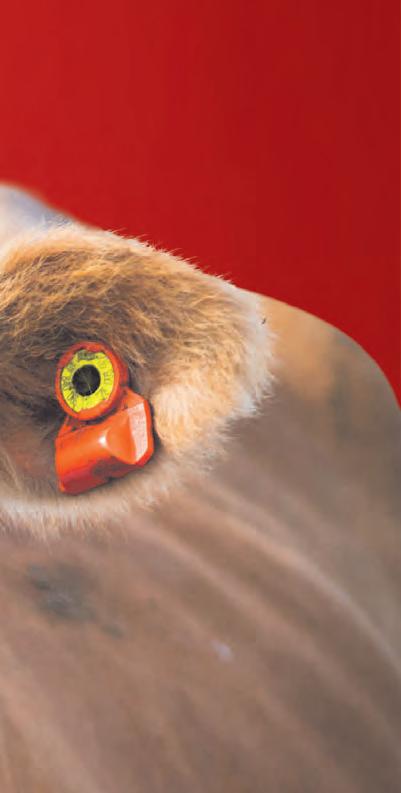
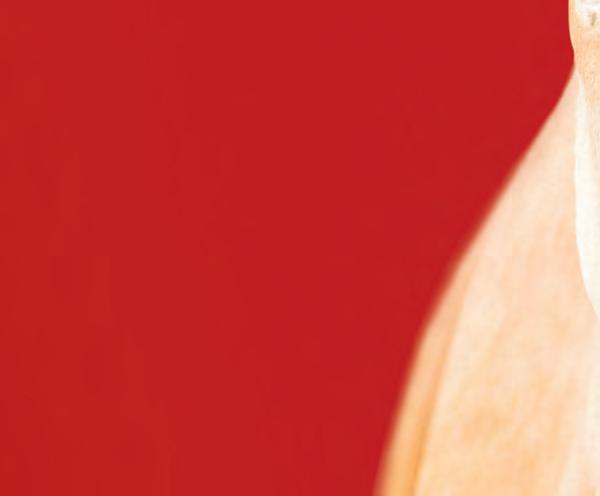


















he product itself I can’t fault. It does what we want it to do. It really shows up when the cows are on heat, the ideal time to AI them. It gives us the information that we need to perform – and to make our cows perform for us.” RACHEL MUNGEAN, JARRAH FARMS, TIMBOON, VIC cowmanager.com World Wide Sires Australia T 0447 047 425 E pquinlan@wwsaustralia.com www.wwsaustralia.com FARMERS’ HAPPINESS “COWMANAGER MAKES US PERFORM BETTER” 47527 WT Advertisement_Mar23-300dpicow.indd 1 24/02/2023 12:03:34
Big sale for Swiss misses
BY JEANETTE SEVERS
THE BALGARRE Brown Swiss sale of cows and heifers — some of whom were dams and daughters — was a considerable success on February 1.
The sale averaged $3180 and topped $5800, with many cows and heifers selling for $3000 and more.
Paul and Sue Balfour held their sale on-farm at Kannoona, NSW, with a large number of bidders in attendance, as well as online and a few people bidding on the telephone.
The sale was organised through Dairy Livestock Services and interfaced with Elite Livestock Auctions.
Only one lot was withdrawn from the sale of cows and heifers from Australia’s top BPI, HWI and SI Brown Swiss herd.
There were also four Red Holsteins among the 76 lots, from the same vendors.
Vendor Paul Balfour said he and Sue had used this type of sale a couple of times previously to reduce herd numbers. This time their impetus was the difficulty of finding farm workers.
Paul said their son — who has worked on the farm for the past 10 years — had decided to move on.
“We decided to reduce the number of cows we were milking because we were struggling to find staff,” Paul said.
“After four months working by myself, Sue and I decided enough’s enough and we’d sell some of the herd.”
He is now milking 160 cows, with heifers coming into the herd this spring.
A new worker has recently started — a local man who has returned to the dairy industry after 20 years.
The on-farm auction began briskly, with the first lot selling for $3750 — Balgarre Volker Heidi GP81 is a three-year-old heifer, PTIC to calve her second calf in March, and milking 5667 litres.
Then lot two sold at $5250 for Balgarre Volker Heidi 2, another three-year-old heifer, with her second calf due in March, and milking 7364 litres.
Lots three and four each sold for $3500. Balgarre Atley Lunda, a three-and-a-half-yearold cow, due to calve in March, and milking 6177 litres, and Balgarre Viori Beauty, a nearly four-year-old cow, also due to calve in March, and milking 10,713 litres.

Lot six, Balgarre Atley Beauty, the first PTIC heifer, changed ownership for $2500. Her calf is due in March.
Lot nine, Balgarre Alexey Lady, also due to calve in March, also sold at $2500.
The price held up with older cows.
Lot 15, Balgarre Luther Jana, four years old and due to calve in February, milking 5992 litres, sold for $4000.
Lot 16, Balgarre Viori Jana, four years old and due to calve in March, milking 6852 litres, sold for $3250.
Lot 17, Balgarre Gstar Jana, born in March 2018 and due to calve in March this year, milking 6958 litres, sold at $3250.
Lot 18, another heifer — Balgarre Alexis Jana
— and artificially inseminated in November, sold for $3600. Her dam milks 8639 litres. Balgarre Virken Victoria, lot 20, comes from a line of reserve and champion cows. Born in August 2017, due to calve in March this year and milking 6856 litres, this cow sold at $4000.
Lot 27, Balgarre Volker Amereto, a two-yearold cow due to calve the second time in August, sold for $5500.
Lot 40, Balgarre Virkon Fran, a five-year-old cow due to calve in April to an Angus bull, and milking 6880 litres, also sold at $5500.
Lot 52, Balgarre Vassili Lady 2, a three-yearold cow due to calve in July, made $4500.
Lot 56 also sold for $4500 — Balgarre Louie Beauty, a rising four-year-old cow due to calve in August and milking 6143 litres.
Lot 71, Balgarre Hercules Heidi, a two-and-ahalf-year-old heifer due to drop her second calf in August, sold for the highest price of $5800.
Among the Red Holsteins, lot 77, the last cow sold on the day, changed ownership at $4500. She was Balgarre Brick Emily, a two-and-a-halfyear-old heifer who calved in August last year, has since tested PTIC to AI, and milks 3349 litres. Her dam milks 9423 litres.
Brian Leslie, from Dairy Livestock Services, said many of the buyers had purchased the Balgarre cattle in previous sales.
Successful buyers of cows and heifers were from the Bega Valley and throughout four states, including districts of Comboyne, Newry, Carpendeit, Gympie, Merrigum, Warroo, Katunga, Glencoe, Muswellbrook and Laceby.

FONTERRA ANNOUNCES STEP-UP
Fonterra Australia has announced a milk price step-up of about 15¢/kg milk solids, taking the average farm gate price to $9.55/kg.
The lift follows its bi-monthly price review and the price will be effective from July 1 last year.
The payment was made on February 15.


The increase comprises 13¢/kg of butterfat and 18¢/kg of protein.
Fonterra Australia managing director Rene Dedoncker said capturing strong commodity prices for cheese contracts in the first half of the year had enabled
the company to deliver this step-up, and despite lower than forecast milk collections and inflationary pressures, demand for their domestic brands and products remained strong and their Australian business continued to perform well.
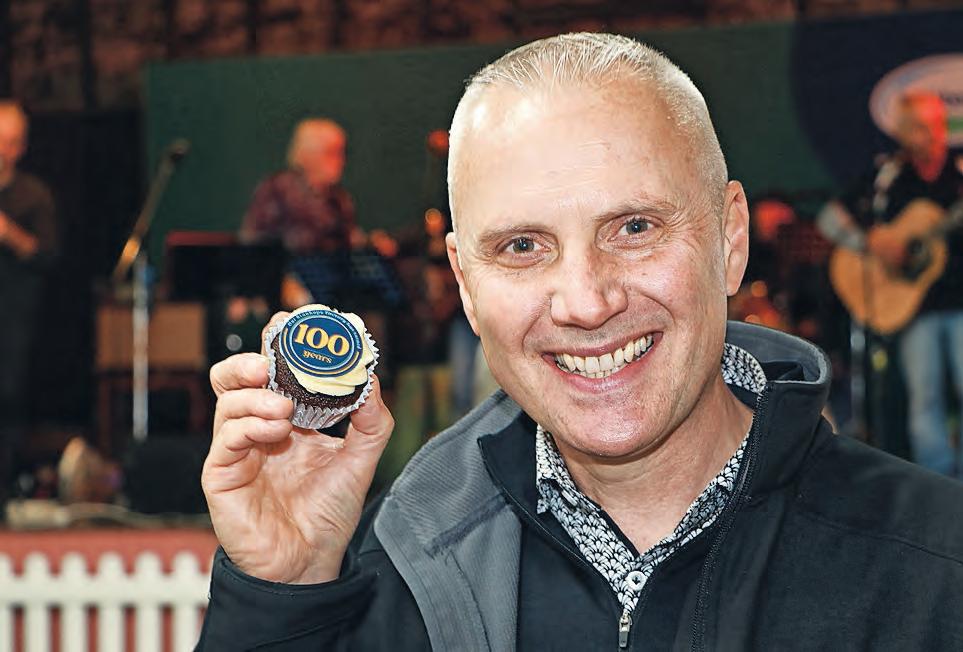
“As always, we will continue to watch the market closely and will keep you updated on market conditions as we round out the season,’’ Mr Dedoncker told suppliers in a letter.
The company’s half-year results will be announced on March 16.
Fonterra managing director Rene Dedoncker says capturing strong commodity prices for cheese contracts in the first half of the year has enabled the company to deliver a milk price step-up.
Lot 66, Balgarre Assay Lunda 2, born September 2019 and due to calve in August, milking 7558 litres, sold for $2500.
8 // DAIRY NEWS AUSTRALIA MARCH 2023 NEWS
Lot 58, Balgarre Assay Beauty, born March 2017 and due to calve in August, milking 5540 litres, sold for $3250.
Braked
for
Stock available for direct delivery
Save yourself from hoof hassles Strong, Easy, and Safe. Proven on thousands of farms since 1995.
winches, easy access All cow handling tasks Essential
every Cowshed. “Make it quick, easy, & safe & staff will happily do hooves.”
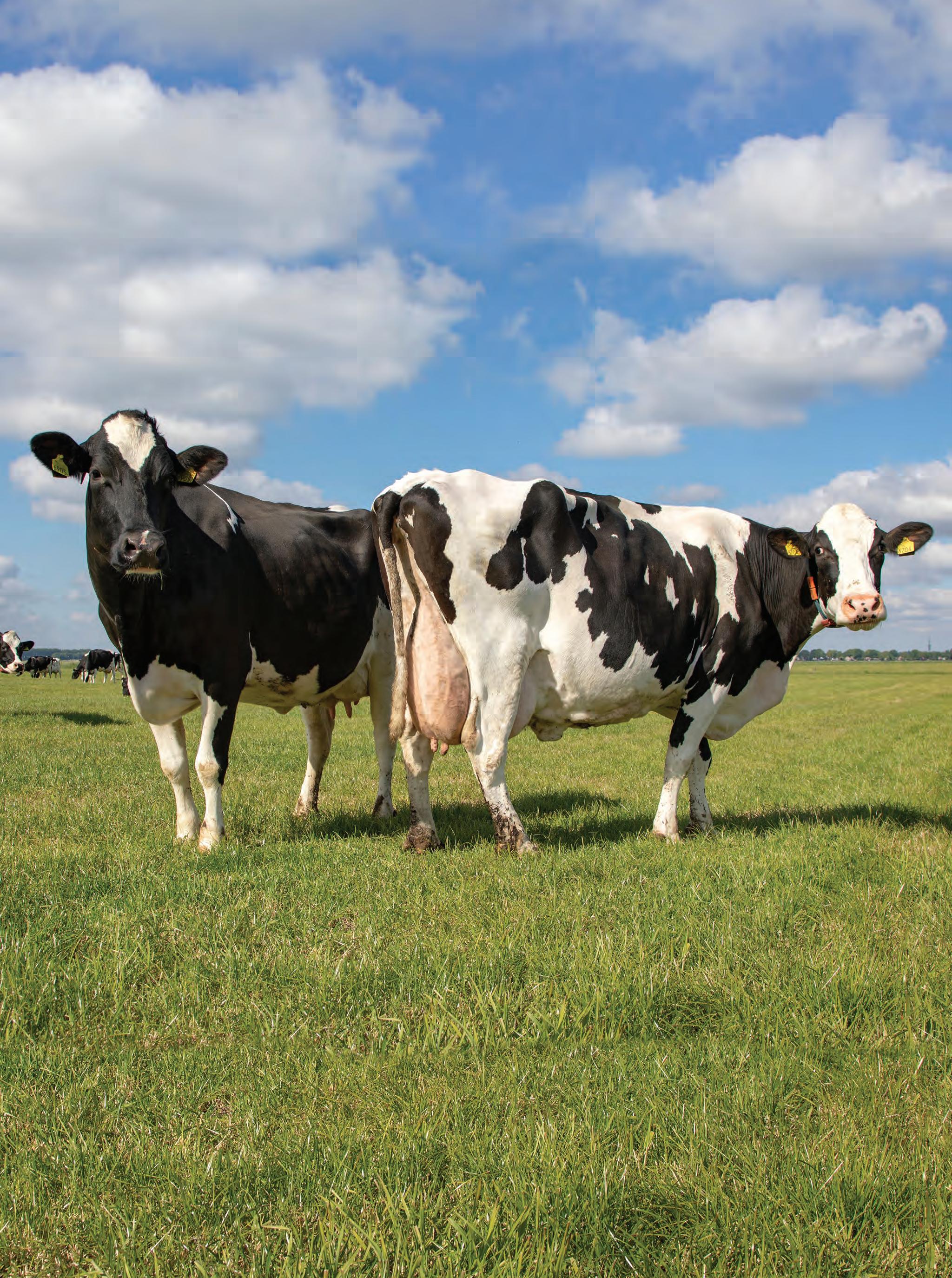



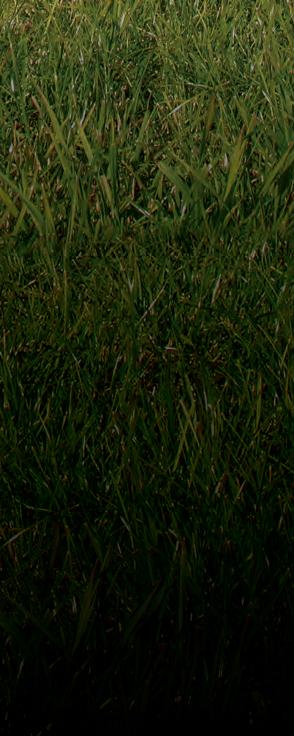


























Much-loved cow dies aged 29
BY GEOFF ADAMS
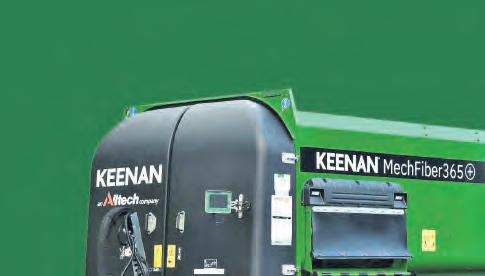
A NORTHERN Victorian family has farewelled a hardy Holstein cow who made it to 29 years old.

She was a prolific mother, producing 18 calves — only giving up when she was 21 — and overcame a number of typical bovine challenges over the years to reach retirement.

Annabelle the cow died in November on the Merrigum farm where she grew up, cradled in the arms of Kaihla King, the human who grew up with her.
At the end, Annabelle had difficulty walking and getting up and arthritis made any movement painful, so the vet was called to put her to the perpetual sleep.
Annabelle was born on the northern Victorian farm of Bob and Nannette Casella at Merrigum (near Kyabram) in September 1993. Her mother died after the birth having suffered a prolapse.
Five-year-old Kaihla named the new calves that year.
“I named them in alphabetical order — A for Annabelle, B for Betty.”
Annabelle’s life was a series of adventures.
At about 20 she had trouble getting up and Kaihla was preparing to say goodbye, but after “a good talking to”, Annabelle rallied and got back on her feet.
Three months before she died, she fell into one of the farm’s large dams and they used hip clamps and a tractor to lift her out.

Kaihla recalls she was a protective mother. She said once when Annabelle and her calf were in a side yard of the dairy, “she put me up against the brick dairy, as if to say: ‘get back’.” Annabelle was also the boss in the dairy, commanding first place through the shed. Sometimes she had to be chased out of the vegie garden and away from the fruit trees.
She loved lawn clippings, roses and willow tree leaves, and was also partial to a bucket of oats.

And if you even doubted for a moment that Annabelle was part of the family, it was put to rest when Kaihla was married and she insisted on having a photo taken in her wedding dress with her bovine friend.

“She wasn’t sure about everyone and we couldn’t get her to the place we wanted for a photograph, so we had to meet her where she was more comfortable; mud and everything.”
The family still look out the farm house windows and search for Annabelle in her paddock.
Even though she wasn’t producing any milk towards the end, she had her own paddock, and eventually had the run of the house yard, munching on roses (her favourite) and even drinking from the lawn sprinkler on a hot day. Veterinary dairy specialist Rob Bonnano said any cow which reached the age of 29 would be an exception.
“We hear of cows which sometimes make it to 15 to 20 years, but anything beyond the mid 20s would be exceptional,” he said.
 Annabelle pictured at her breakfast bar, with lawn clippings.
Annabelle and Kaihla at her wedding in 2009.
Photo: Tamara Cadd Photography
Annabelle pictured at her breakfast bar, with lawn clippings.
Annabelle and Kaihla at her wedding in 2009.
Photo: Tamara Cadd Photography
10 // DAIRY NEWS AUSTRALIA MARCH 2023 NEWS
change you make on the farm needs to pay back and a KEENAN diet feeder enables you to make the changes you want for consistency, improved herd health and yield. Contact us today Phone 1800 KEENAN | Alltechlienert.com.au/keenan NEW MECHFIBER+ RANGE
Annabelle became a family favourite.
WHEN DETAILS MATTER Every
The reimagined GEA ProManure SlopeScreenTM
Exactly what you asked for.
Improved modular design with the same high-level performance. Combined with the GEA OptiCleanTMautomated cleaning system - reduce labor and optimize performance throughout the life of the screen.
The GEA OptiCleanTM uses pressurized water to remove fiber and includes an integrated chemical system to remove minerals and soil.
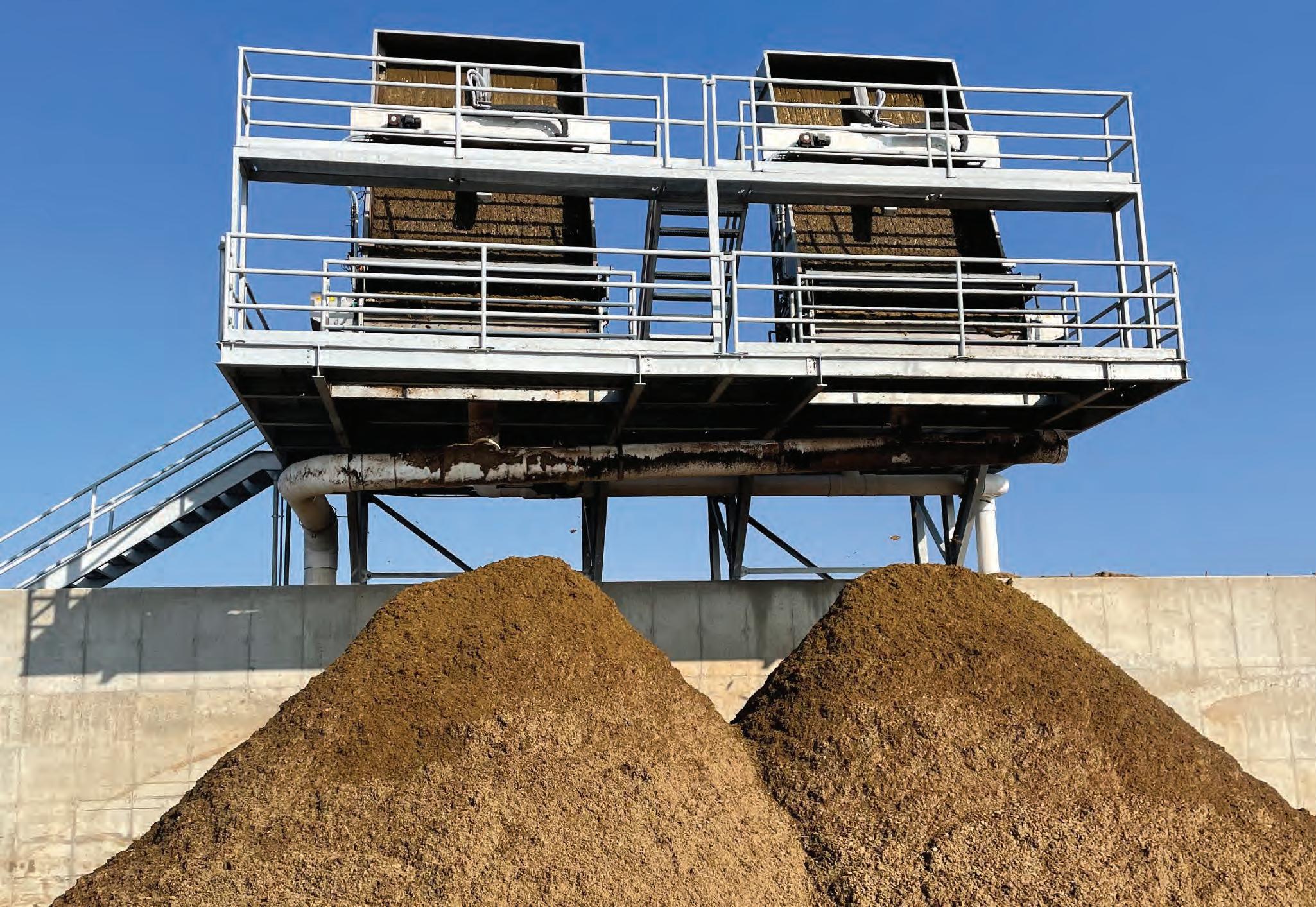
Scan to learn more about the GEA ProManure SlopeScreenTM Sustainable use of manure and its components Built of stainless steel to last in highly demanding and corrosive environments Modular design that can grow based on individual customer needs Automated cleaning system to reduce cost and save labor
DairySA spreads the word
DAIRY FARM succession success, understanding and rethinking methane, intensifying dairy systems and understanding effluent management are just some of the topics which will be explored at DairySA’s upcoming Central Conference.

Returning for the eighth year, up to 150 delegates are expected to meet face-to-face for the popular day, which is driven by local input from South Australia’s Central dairy farming community.
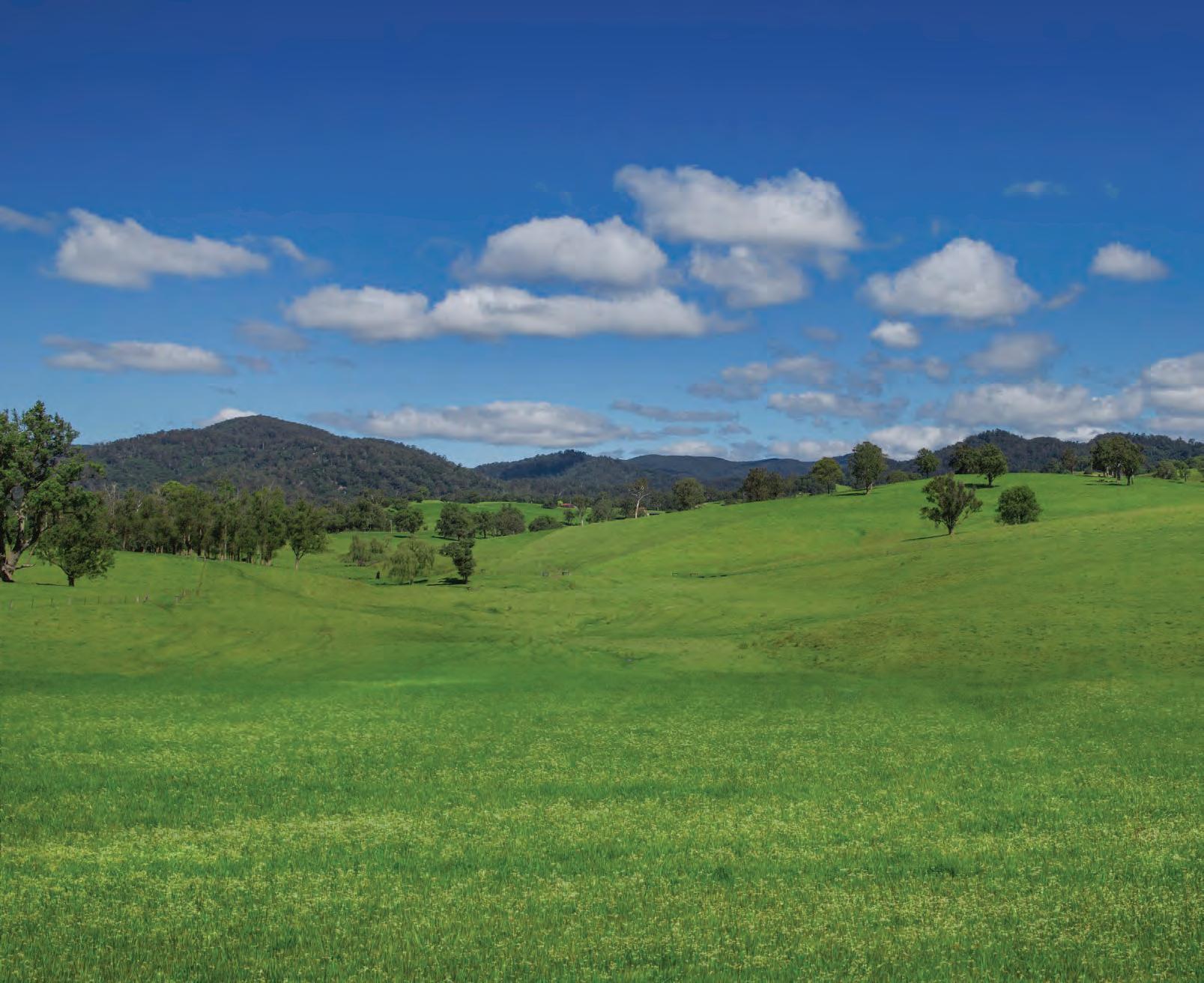
“We know our farmers and work hard to meet their expectations, which means listening to their interests and asking what they want to see more of,” conference co-ordinator Beck Burgess said.
“In 2023, we are proud to present relevant, timely and challenging discussions which reflect the directions and subjects requested by our farmers.”
This year’s keynote speakers include:
ɋ Joseph ‘Jake’ Martin III: World renowned dairy adviser for housed and intensive systems.


ɋ Professor Frank Mitloehner: University of California Davis.

ɋ Scott Mcdonald: Agriculture Victoria.

ɋ Olie Le Lievre: Humans of Agriculture. The DairySA Central Conference is the result of a collaborative approach between DairySA and Central region South Australian dairy farmers and will be held on Wednesday,
March 22 from 9am at the Bridges Event Centre, Murray Bridge Racing Club. Registrations for the conference and dinner are now open through Eventbrite at: https://bit.ly/3VonqQ3
DAIRY SHORTS
Frozen yoghurt on shelves
Frozen yoghurt brand, Yo-Chi, has just rolled out its Greek-style yoghurt tubs in Coles stores around the country. The launch was timed to coincide with International Frozen Yoghurt Day on February 6.
Yo-Chi says its soft-serve yoghurt and Greek-style frozen yoghurt tubs have gained a cult following and with a recent rollout of new stores opening in Brisbane, Noosa, Perth, Melbourne and Broadbeach.
The flavours currently available in Coles stores are the Chocolate, Natural and Wild Berry, with a new range of deluxe flavours currently in development to be introduced in the coming months.
More awards for Norco
Norco Natural Elbo Style Cheese has taken home the prize for Best Dairy for Lunchboxes as voted by a panel of dietitians at Australian Healthy Food Guide magazine.
The award is the second accolade for Norco Natural Elbo Style Cheese, which was voted Best Dairy in the EatWell Yummies Award 2022, voted by more than 17,000 Australian Wellbeing consumers.
Australian Healthy Food Guide offers advice from dietitians and nutritionists to help consumers choose products at the supermarket. The inaugural Healthy Food Guide Lunchbox Awards recognises innovative and exciting foods ideal for school or work lunchboxes.
Norco Natural Elbo Style Cheese made its way on to the list because of its high calcium content, acidophilus cultures for good gut health, reduced salt and low sugar content, making it a delicious and nutritious choice for lunchboxes for little ones or grown-ups.
The cheese is a legacy product that has been in the Australian market for more than 35 years.
Scooping up the best dairy
Australian dairy producers have the chance to be rewarded and recognised, with entries now open for the Royal Queensland Cheese and Dairy Awards and the Royal Queensland Ice-Cream, Gelato and Sorbet Awards presented by King Street.
There are 59 classes in Cheese and Dairy, including cheese, desserts, yoghurt, butter, milk and cream; while there are 14 classes in Ice-Cream, Gelato and Sorbet, including vanilla, chocolate, strawberry and fruit.
The entries are judged on flavour, aroma, body, texture and presentation.
All gold medal winners are eligible to enter the Australian Grand Dairy Awards, which are held annually.
Entries must be in by Friday, April 14, with judging taking place from Monday, May 15 and the winners to be announced at an awards presentation on Friday, May 19.

12 // DAIRY NEWS AUSTRALIA MARCH 2023 NEWS Order a minimum of 25 straws and save $5.00 per straw. Offer is subject to semen availability and prices are quoted exclusive of GST. Orders can be placed by contacting your Genetics Australia representative or your local semen distributor and cannot be used in conjunction with any other offer. Offer is valid until 31st March 2023 – To be invoiced and delivered prior to Friday 31st March 2023. Production ASIkgPP%MilkkgFF%Rel% 195200.34124340.5279 HealthTraits SurvivalCellCountMastitisResDaughterFertHeatTolerance 112131101103100 55% rel 70% rel 70% rel 54% rel 38% rel Type OverallType 103 MammSystem 107
Best of the best
THE ROYAL Agricultural Society of NSW announced the champions of its 2023 Sydney Royal Cheese & Dairy Produce Show on February 16.
Following four days of intense judging, which saw more than 500 entries go head-tohead across 95 classes — including categories such as cheese, yoghurt, gelato and sheep, goat, buffalo or camel milk products — 18 champion products were named.
This year the competition welcomed a range of new exhibitors, with first-time entrants making up 25 per cent of the exhibitor count.
From these new exhibitors, 51 medals were awarded, which is an outstanding result for first-time entrants.
won Champion White Milk for its Brownes Lactose Free Full Cream Milk.
In addition to their award, top medal winners are given the opportunity to promote their product at the Sydney Royal Easter Show and may be chosen to supply their product at one of the many events that take place at Sydney Showgrounds throughout the year. For the full list, visit: https://www.rasnsw. com.au/sydney-royal-competitions/ competitions/cheese-dairy/
it’s been great to get a little bit of experience on a lot of high-end cheeses that are a little bit different to how some of the US cheeses perform.
Optimise lifetime feed conversion efficiency.
IMPROVE HEALTH
“The population out here must love big flavours, which is great.
“I noticed the cheddars tend to be a little sweeter than in the states, which works out really well with some of these long-aged cheeses that you’re doing.
“One of the big standouts, for me, was the high-end ingredients that were added into the cheese, which I don’t always see at different contests throughout the world — that was fantastic.
“I’ve also enjoyed having access to your high-end creams. I think that is one category you do even stronger than the US.”
RAS 15th Annual President’s Medal finalist Robertson’s (NSW) Pecora Dairy, reclaimed its 2021 title taking home Champion Cheese of Show for its Yarrawa cheese, while South Gippsland’s (Victoria) Berrys Creek Gourmet Cheese showed its 2022 Champion Cheese of Show, Oak Blue, is still an award-winner by claiming Champion Specialty Cheese and a spot on the coveted Australian Cheeseboard once again.

For ice-cream fans, it was Elizabeth Town’s (Tasmania) Van Diemans Land Creamery that impressed the judges with its Lemon Curd Ice-Cream winning Champion Full Cream Ice-Cream or Gelato, while Sydney’s (NSW) Gelateria Goldola took home Champion Low/ Reduced Fat Ice-Cream or Gelato with its Frutto Della Passione.
Fonterra Australia claimed Champion Butter for its Duck River Premium Butter made in Smithton (Tasmania) and Brownes Dairy (WA)
What if you could proactively improve calf and cow health sothey can better withstandchallenges, including those caused by mycotoxins?
REDUCE PATHOGENIC BACTERIAL LOAD
What if you could control calf diarrhea before an outbreak, and reduce the incidence, severity and duration of other common diseases that affectthe feedconversion efficiency of lactating cows and your bottom line?

PROMOTE PRODUCTIVTY
What if you could add nutritional insurance to every stage of your cattle’s lives resulting in healthier heifer calves that join the milkingherd ready to contribute at a high level, and lactating cows that spend less time off feed.
Research demonstrates: CELMANAX

ONLY CELMANAX
Has been shown to:
•Agglutinates and binds E. coli and Salmonella enterica.
• Agglutinate and bind E. coli and Salmonella enterica
•Reduces the incidence, severity and duration of mastitis and cryptosporidiosis infection.

• Reduce the incidence, severity and duration of mastitis and cryptosporidiosis infection

•Reduces blood stress markers during and after transport and temperature stress.
• Reduce blood stress markers during and after transport and temperature stress
•Minimises cytotoxic damage caused by a variety of mycotoxins and carryover of aflatoxins in milk.
• Minimise cytotoxic damage caused by a variety of mycotoxins and carryover of aflatoxins in milk
• Improve weight gains and performance in calves and milk yields in lactating cows
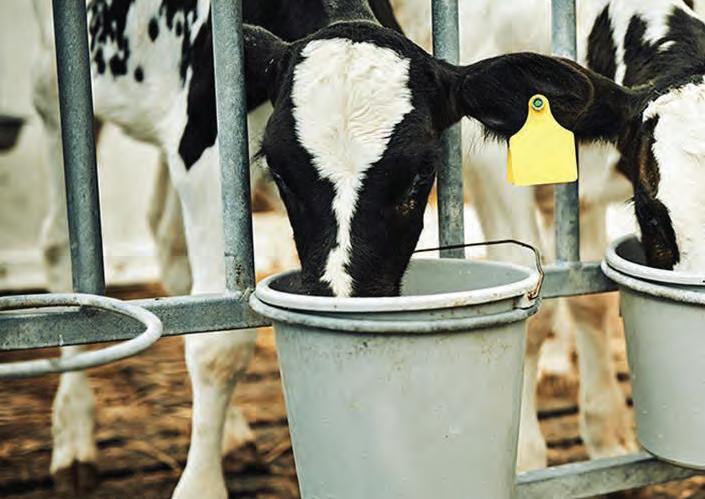


•Improves weight gains and performance in calves and milk yields in lactating cows.
Distributed By:
Australia’s finest cheese and dairy products were recognised at the 2023 Sydney Royal Cheese & Dairy Produce Show.
// 13 DAIRY NEWS AUSTRALIA MARCH 2023 NEWS
“One of the big standouts, for me, was the high-end ingredients that were added into the cheese, which I don’t always see at di erent contests throughout the world — that was fantastic."
www.auspacingredients.com.au
There's always room for improvement
People key to success
SURROUNDED BY floodwater last year, Monique and Mark Bryant tried something new. The third-generation dairy farmers from Kaarimba, in northern Victoria, used a synchrony program to join their heifers.
The Bryants had discussed the possibility of
using this breeding tool with their herd improvement organisation Nu-Genes, but in the middle of natural disaster — and forced onto another farm — Monique and Mark knew they could trust the advice from their service provider.
“They understood where we were and what our constraints were,” Monique said.
“They encouraged us to step into this space by saying it will work — even if you just do it this once.
“That came down to our relationship with them, they knew how far they could push us, encourage us.”
That was back in October.
And it turned out Nu-Gene’s justification for the breeding program — it enabled a lot of work to be completed across a couple of days, rather than a little work every day — not only made joining less “stressful”, but it also delivered “good results”.
Monique, who milks 400 cows with her husband and their children Ella, 17, and Aiden, 15, will share her experience working with dairy industry service providers as part of a panel at the Herd ’23 breeding and genetics conference in Bendigo this month.
Joined on stage by fellow northern Victorian farmer Mark Walpole and Nu-Genes director Gerard Daniel, Monique and the panel will tackle the industry’s hottest topic— people in dairy. She will outline her relationship with service providers and how, as a data-driven manager, she asks for feedback to improve management practices and decisions.
In return, she ensures everyone on-farm is prepared for the arrival of any service provider, respecting their time by ensuring the task begins as scheduled.
The Bryants value the relationships they’ve nurtured over many years.
“We look at aligning ourselves with service providers that have the same values as we do,” Monique said.
“We don’t shop around, it takes a long time to get to know each other, shopping around all the time is counterproductive.”
These long-term relationships also help both parties navigate challenging situations.
Selecting bulls for your future progeny has always been about herd efficiency, sustainability and improvement. Now we’re making the sustainability part a little easier.
LIC’s new HoofPrint ® index assigns bulls a score based on their progeny’s estimated methane and nitrogen efficiency. The higher the score, the more improvement on your farm and the environment. And that could give you a greener footprint.



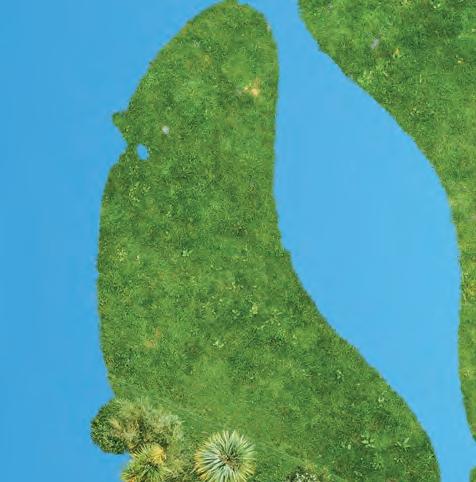

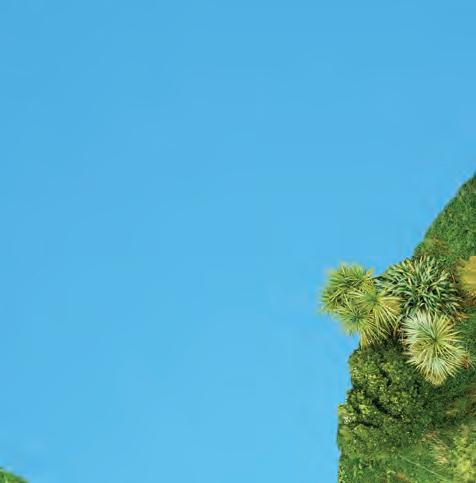
Talk to your District Manager about the HoofPrint ® index today.
1800 454 694 | admin@licaus.com.au
www.licnz.com.au


“Because we’ve been building relationships over time, if a problem does pop-up, it is easier to resolve because we have got a good relationship there,” she said.
“We might still have to have a really difficult conversation, but because we’ve got a respectful relationship, it’s easier and, no doubt, helps get an outcome that is favourable for both parties.”
Clear communication also helps the Bryants provide the best work environment for their two staff.
Monique will tell the conference next month how they not only ask staff for feedback, but they also act on this information.
For example, fixing things that are broken, scheduling time each week for employees to complete work tasks together and guaranteeing a “quiet and calm” workplace.
Staff, like service providers, are crucial to the success of the Bryants’ dairy farm.

“I don’t say there are people working for me, we have staff working with us.”
Herd ’23 will be held on March 15 and 16.
Kaarimba dairy farmer Monique Bryant will share her insights at this month’s Herd ‘23 breeding and genetics conference in Bendigo.
14 // DAIRY NEWS AUSTRALIA MARCH 2023 NEWS
... if a problem does pop-up, it is easier to resolve because we have good relationships ...
Improve your footprint with HoofPrint ®
Investing in future leaders
BY SARAH COLLIER
THE GARDINER Foundation believes strongly in investing in emerging leaders to help develop a long-term future for the dairy industry.
Supporting rural people beginning tertiary study through the foundation’s tertiary scholarship program contributes to achieving this goal.
“We are confident that by selecting people who are capable and demonstrate a passion for regional Victoria, they will one day return to dairy communities with the skills they’ve developed while studying, thereby strengthening those dairy communities,” Gardiner Foundation CEO Allan Cameron said.

Gardiner Foundation offers tertiary scholarships to up to seven people living in Victorian dairy communities.
Students must pursue a career that will either directly benefit the dairy industry and/ or benefit dairy communities.
Each scholarship is worth $10,000 a year and provides financial support for accommodation, travel and essential study materials.
Scholarships are available for the first three years of a student’s university or TAFE course.

“The scholarship was a critical part in my life which has led me to the work I’m in now. I don’t know where I would have ended up without it,” Lauren Brewer, a previous scholarship recipient, said.
She currently works as a paramedic at a remote mine site in the Gibson Desert.
Each scholarship is named in honour of individuals who have made a significant contribution to the dairy industry and its communities in Victoria.

Scholarships honour Shirley Harlock, Jakob Malmo, Bill Pyle, Doug Weir and Niel Black.
Gardiner has provided the scholarships since 2008 and awarded 75 scholarships with a total value of more than $1.7 million.
A review found more than 70 per cent of past scholars have gone on to live in and contribute to the dairy industry and dairy communities since completing their tertiary studies.

This year’s scholars are:
William Coleman, East Gippsland, who received the Jakob Malmo scholarship, and is studying a Bachelor of Medical Studies/ Doctor of Medicine.
Hamish Wortley, Macarthur, who received the Bill Pyle scholarship, and is studying a Bachelor of Business (Agribusiness).
Hamish McLeod, East Gippsland, who received the Doug Weir scholarship, and is studying a Bachelor of Commerce.
Tess Doyle, Cohuna, who received the Niel Black scholarship, and is studying a Bachelor of Speech Pathology (Honours).
Hamish Smith, Saint Germains, who received the Niel Black scholarship, and is studying a Bachelor of Agriculture/Bachelor of Business.
Spend more quality time with your 2 legged family
Being a dairy farmer is sometimes like being a parent to your herd, but that means having less time for your two-legged family. Thankfully, Allflex® Dairy Monitoring can help. It allows you to see when cattle are in heat, unwell and lots of other useful information. All on your phone, wherever you are. And it's backed with great training and local support.

Eden McMillan, East Gippsland, who received the Niel Black scholarship, and is studying a Bachelor of Paramedicine/ Bachelor of Nursing.
Sarah Matthews, Glen Alvie, who received
the Shirley Harlock scholarship, and is studying a Bachelor of Environmental Science and Management.
For more information and to apply, visit: www.gardinerfoundation.com.au/ts
// 15 DAIRY NEWS AUSTRALIA MARCH 2023 NEWS
(From left, back row) Gardiner Foundation tertiary scholarship recipients Tess Doyle, Hamish Wortley, Will Coleman, Hamish McLeod, Sarah Matthews and Hamish Smith; with (from left, front row) Bill Pyle, Rosita Weir, Shirley Harlock and Jakob Malmo.
www.allflex.com.au 1300 138 247 ® Registered trademarks. Copyright © 2023 Merck & Co., Inc., Rahway, NJ, USA and its affiliates. All rights reserved.
Allflex Dairy Monitoring
Make multitasking manageable
MANAGING A dairy business can sometimes feel like the Olympics of multitasking — getting daily chores done while keeping an eye on which cows are on heat and trying to catch the sick ones in time as well.
Rachel Mungean can relate, as she was trying to do it all.
But since Rachel adopted a cow monitoring system into her work routine, a certain peace of mind has replaced the stress.
"I'm not running around trying to attend to calving cows, observe tail paint on the cows just to make sure the right cows are getting bred — it may still be busy, but it is more controlled now.”
A smart and easy system
Rachel runs Jarrah Farms in Timboon, Victoria. They milk 500 cows off 323ha and have an out-paddock where they run their replacements, which are about 120 to 130 head of stock.

In 2020 the farm started working with the CowManager system — ear sensors that monitor cows’ ear temperature, behaviour, activity, rumination and eating time.
Users get alerts on their phone and computer, plus real-time insightful data to base business and herd decisions on.
For Rachel, the ease of use of the sensors is a particular big plus.
“They’re really easy to put in, it’s just a matter of slipping it over (a blank round tag) and folding it back. So easy to use, so easy to take off, so easy to apply.”
Improving herd performance
CowManager’s Fertility Module recognises heat intensity and heat stage, and identifies heat peaks, possible pregnancies, non-cycling cows and even potential abortions.
“The product itself I can’t fault,” Rachel said. “It does what we want it to do. It really shows up when the cows are on heat, the ideal time to AI them.
“It gives us the information that we need to perform and to make our cows perform for us.”
The Health Module helps them stay on top
of herd health, detecting diseases days before a cow shows clinical signs of being ill.

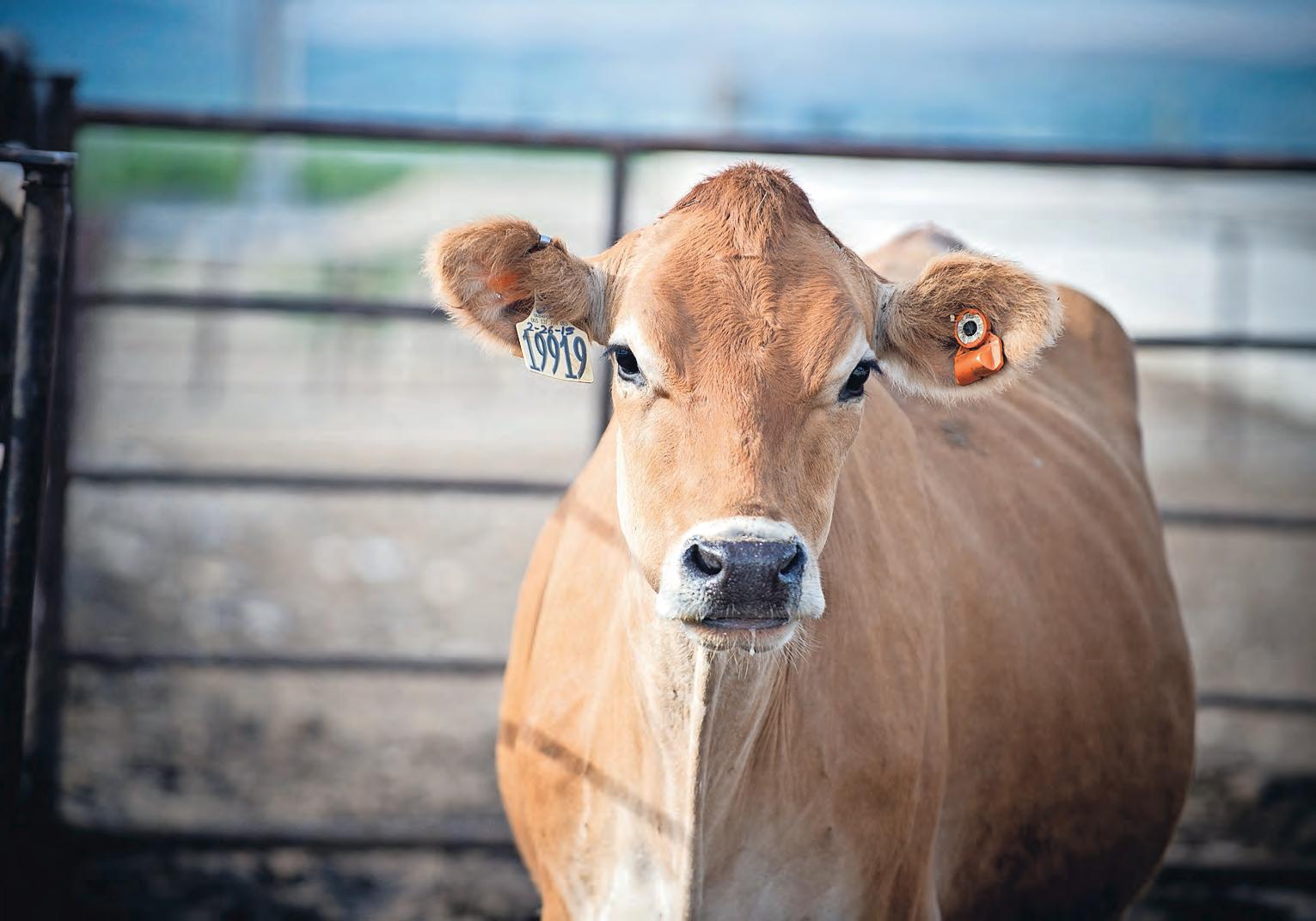
“We utilise it a lot and we've found it works really, really well,” Rachel said.
“It'll show up a cow before she actually shows signs of being sick. Which is really a bonus.

“It gets you a step in front before the cow goes completely off her milk. That’s when you usually visually start seeing that there’s something wrong.”
Being able to switch off
As passionate as Rachel is about running her business, it’s nice to know she can sometimes just switch off without having to worry she’ll miss something important.
“You can always walk away knowing the cloud and all that above, is always marking in ‘this cow’s on heat’ or ‘this cow might
not be well’.”
And of course, the system never sleeps.
“Even at night-time, you can just switch off and you know you’re going to get alerts when you wake up in the morning.
“You've always got that information on-hand (on the smart phone CowManager app), with you, whenever you need it.”
BEGA OUT OF VITASOY
Vitasoy international has taken up the option of buying out a large share of Vitasoy Australia held by Bega Cheese.
Bega’s subsidiary, National Foods, will sell the shareholding for $51 million.
Bega has said it will now look for other opportunities in the plant-based beverages and products market.
Bega, which last year recorded a turnover of $3 billion and EBIT of $46 million, had net debt of $265 million.
In early February, Bega announced Vitasoy International had exercised a call option to purchase the 49 per cent
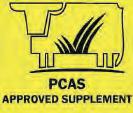
shareholding in Vitasoy Australia in accordance with an agreement between Vitasoy International, Vitasoy Australia and Bega.
Bega has agreed to provide distribution services in the transition, until March 31.
In the last annual report the company noted it had increased production of plant-based proteins, and that plantbased foods represented a fast growing category that achieved 11.7 per cent growth in the 2022 financial year.
Vitasoy produces soybean-based yoghurt and soybean juice, almond juice, rice juice, coconut juice and oat juice.
 Jarrah Farms started working with the CowManager system in 2020.
Photo: Kimberley Teske Fetrow
Jarrah Farms started working with the CowManager system in 2020.
Photo: Kimberley Teske Fetrow
16 // DAIRY NEWS AUSTRALIA MARCH 2023 NEWS Understand the impact of toxin contamination Know your mycotoxin and bacterial toxin risks Contact Ajay Agarwal – 0455 773 707 ajay.agarwal@ew-nutrition.com ew-nutrition.com
Rachel Mungean has found greater peace of mind since using the CowManager system.

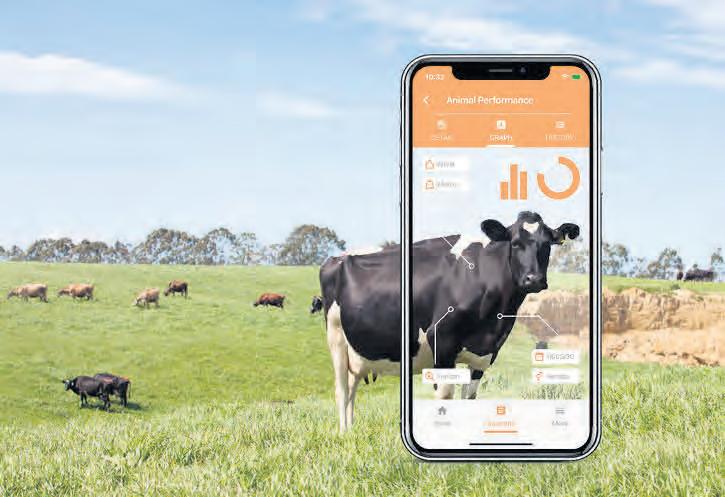
Discover how Gallagher cloud-connected solutions can save you time and money. A better view of your farm is here. am.gallagher.com The Gallagher Ag Devices App gives farmers a complete view of their fence. See information about fence performance, be alerted of fence faults and turn the fence on and off - all in the palm of your hand. Take control of your data with a fully connected solution that allows you to track animal performance, make better decisions and grow your profit. To learn more about Gallagher solutions and services contact our Customer Service Team on 1800 425 524 or talk to your local Territory Manager.
Reduce the pathogenic load
WHERE COWS and calves live, disease-causing bacteria (pathogens) will always be present.

These potential invaders are responsible for some of the most prevalent health issues in the dairy industry today (mastitis and scours).
Due to the significant impact these diseases present to ongoing profitability and animal wellbeing, having an appropriate integrated disease management strategy is essential to mitigate the risk of disease-causing pathogens on farm.
Nutritionally, one option that has been explored is the use of yeast-derived products, however not all yeast products perform with similar efficacy.
Enzymatically derived Refined Functional Carbohydrates (RFCs) from yeast act through several mechanisms to alleviate production challenges leading to improved profitability.
Some of these benefits include ability to manage cryptosporidiosis, bacterial morbidity and mortality, and decrease mycotoxin damage.
The manufacturing process involved in refining these functional carbohydrates from yeast seems to play a key role in functionality of the resulting products.
While the structural components of yeast cells, mainly the MOS, beta glucans and chitins are present in similar concentrations, there are differences in their structure and functionality.
Studies show functionality or the efficacy against disease of a product does not seem to
be directly related to the quantity of these carbohydrates present in the product.

It is well established that the gut plays a critical role in livestock production.
It is both the site where nutrients are converted to energy for growth and the site where energy is utilised for maintenance.


The balance between the two determines growth, efficiency, and profitability for livestock production. Key to achieving this success is balancing the gut microflora.
A large, well-adapted commensal microbial population (mix of microorganisms regularly found at that site) can exclude many potential pathogens through competition.
Research demonstrates that RFCs support the commensal microflora to improve feed digestibility while preventing the pathogens and mycotoxins from causing acute and subacute damage.


In addition, the liberated mannose, its oligomers and its polymers decrease attachment and infiltration by all genus of the enterobacteriaceae family with type one mannose sensitive pilli.
Similarly, RFCs also show a dose-dependent decrease in attachment and infectivity of Cryptosporidium parvum (C. parvum) sporozoites in bovine and porcine epithelial cell lines.

Calves receiving RFCs were 50 per cent less likely to get infected with C. parvum compared to unsupplemented calves.
Moreover, infected calves receiving RFCs stopped shedding faster and had less scouring and dehydration compared to supplemented calves.

One study has also demonstrated that cases of clinical mastitis for yeast culture plus RFCs were less than half those for control and yeast culture during weeks eight to 14 on trial.
Somatic cell count was higher for cows fed
control and yeast culture diets compared with yeast culture RFC, primarily during week eight to 14 on trial.

While in a separate temperature/transport stress-related trial cows fed yeast culture plus RFCs recorded significantly lower blood (serum) stress markers as well significantly lower E. coli counts during the 24 hours post event.
– Supplied by AusPac Ingredients

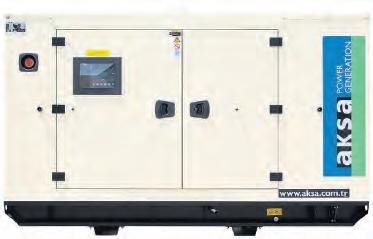









18 // DAIRY NEWS AUSTRALIA MARCH 2023 NEWS
for,
Power Systems Australia Pty Ltd 1300 453 054 3 Holcourt Road Laverton North Victoria 3026 www.powersystemsaustralia.com.au sales@powersystemsaustralia.com.au CONTACT US TODAY FOR A FREE QUOTATION
Power Systems Australia are the Australian AKSA distributor for a large range of Diesel, Gas & Hybrid generators for stand-by and prime applications. No matter what style or size of generator you are looking
Power Systems Australia are your Generator specialists.
Bumper crowd at ADC
BY BEN SEEDER
MORE THAN 600 delegates descended on Hobart for the Australian Dairy Conference in mid-February, with highlights including dairy market updates from the Freshagenda consultancy, and a moving account of a tough period in the business of Western Australian dairy farmer Dale Hanks.
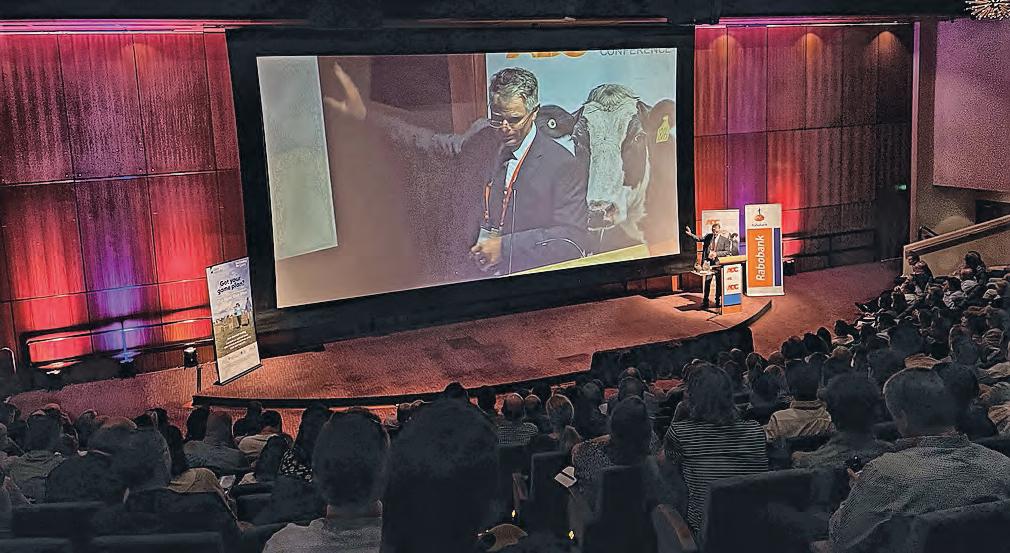
Freshagenda director Jo Bills pointed to the millennium drought, the global financial crisis and the fact Essendon hasn't won a premiership since 2004 as contributors to the country’s precipitous collapse in milk production during the past two decades.
She said more recent factors included a drop in the number of farmers, caused by surging land values that incentivised stakeholders to cash out and leave the industry.
Those same higher land values posed a new barrier to entry for those younger would-be farmers trying to gain a foothold in the sector.
Western Australian dairy farmer Dale Hanks gave a moving account of his brush with business failure in 2016 to 2018, when Brownes Dairy exercised a clause to end a milk purchase contract with his and three other local farms in 2016.
University of Melbourne’s
Professor Richard Eckard said with the right incentives in place, Australia’s dairy sector could reduce emissions by 50 per cent “tomorrow”.
“The first of October came around, and there were suddenly no Brownes milk tankers there, we had 300 cows in-milk, and what were we to do with this milk in the tank,” he told the conference.
Dale said the state agriculture department rang one day to ensure that he was still milking the cows on animal welfare grounds.
The next day, the WA Environmental Protection Authority rang him.

“They said, ‘you cannot dispose of that milk on the farm — if you do, we’ll be able to fine you’. I said ‘thanks — how about talking to your minister about finding a home for this milk’.”
Dale said it was a stressful two years for him and his wife, Leanne.
“I was done, I was no longer going to be a dairy farmer, I was in a pretty bad place mentally for a while there.”
After surviving by selling off much of his 300-cow herd, processor Lactalis began buying his farm’s milk again in 2018.
University of Melbourne’s Professor Richard Eckard gave a presentation about Australia signing on to the global methane pledge, committing the country to reducing methane emissions by 30 per cent below 2020 levels by 2030.
He said with the right incentives in place, Australia’s dairy sector could reduce emissions by 50 per cent “tomorrow”.


Other topics included succession planning, debunking the myths on cattle and methane, and the challenge of producing food in ways that are socially acceptable, environmentally friendly and economically viable.

The event included a pre-conference tour of farms in Tasmania’s north, the Young Dairy Scientist Award (see page 22) and a gala dinner.
 Western Australian dairy farmer Dale Hanks’ world was turned upside down in 2016 when his supplier ceased collecting their milk.
Western Australian dairy farmer Dale Hanks’ world was turned upside down in 2016 when his supplier ceased collecting their milk.
// 19 DAIRY NEWS AUSTRALIA MARCH 2023 NEWS www.auspacingredients.com.au
Nutrition key to production
BY RICK BAYNE
South-west Victoria farmers have been told that healthy cows that avoid heat stress and inflammatory diseases and are given nutritious feed and clean water will produce the most profitable results.
WestVic Dairy hosted three interactive
workshops on dairy farms across south-west Victoria during February to give farmers options to improve their feedbase and nutrition strategies.
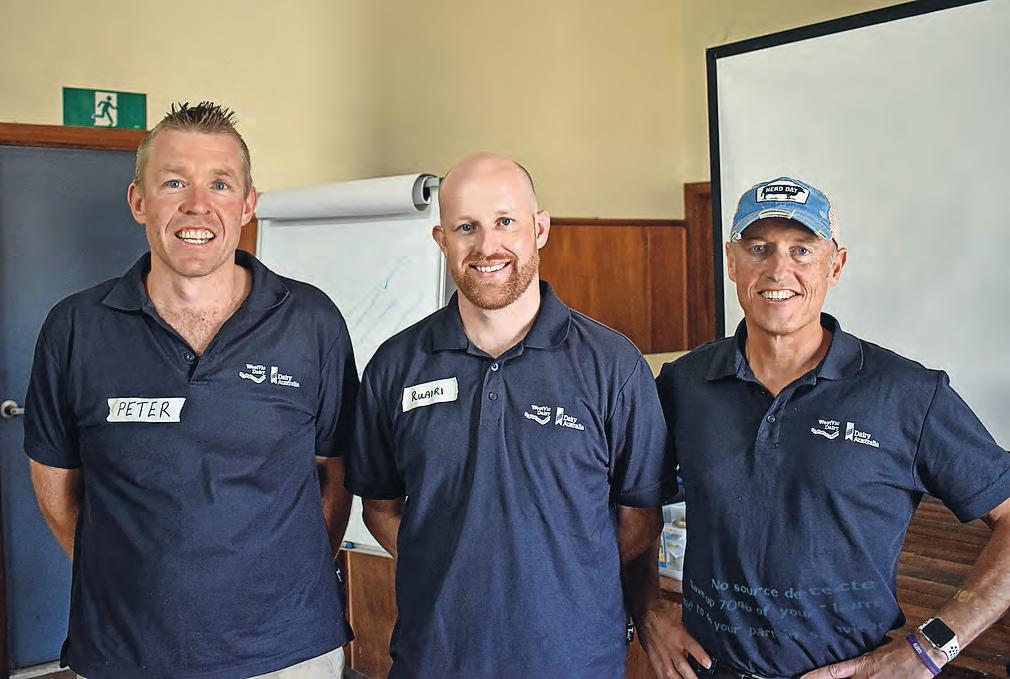
The sessions highlighted the importance of selecting the best quality seeds for your region, managing body condition and inputs and the value of forage quality and digestibility.
During the sessions, Pip Gale from
FeedWorks provided an overview of the Advanced Nutrition in Action Program (ANIA), which will run in the WestVic Dairy region in 2023.
Dairy Australia’s Forage Value Index lead Ruairi McDonnell discussed recent developments in the FVI and the important role it can play in helping farmers to select the best pasture seed to meet their feed requirements.


Local farmers also opened their businesses for on-farm visits during the sessions at Pirron Yallock, Portland and Simpson.
Mr Gale said farmers can’t separate nutrition and performance and that common threads exist in all profitable feeding systems.
“Forage quality and digestibility are very important factors in optimising dry matter intake,” he said.


Mr Gale emphasised the importance of having healthy cows to maximise nutrient partitioning and revenue and the need for technical efficiency and effective cost controls across all farm systems.
“Cows are the champions of our businesses,” he said.

“The nutrients we provide can switch on the genes to make cows more profitable.

“Producing more blood glucose and getting it to the mammary glands will drive more milk and we need to provide a diet that makes that happen.”
Multiple studies have shown that managing cows’ heat stress leads to increased milk production, as does avoiding illnesses such as
mastitis and lameness.


“Avoiding inflammation will avoid immune cells sucking up blood glucose. The first rule is to optimise intake, and illnesses will mean less milk and therefore less profit,” Mr Gale said.
Ensuring cows are not dehydrated is critical to good milk production.
“The first and most important nutrient for any living creature is water,” Mr Gale said.


“Milk is 87 per cent water so what they drink is critical and the hygiene of troughs and quality of water is very important.”
He said cows could consume 40 per cent of their daily free water intake after milking, meaning coffin troughs at the end of the dairy can be very beneficial.
“If you impinge on their ability to drink good water, you impinge on their milk production.”
Mr Gale also highlighted the importance of grazing at the 2.5 to three-leaf stage, the value of investing in the growth of replacement heifers and seeing it as a profit factor rather than a cost, and the need to carefully manage the mix and composition of TMR mixer wagons.
Mr McDonnell described a high-quality fibre diet as essential for good production and he urged farmers to consult the FVI for an independent review of seed performance so they can benefit from long-term genetic gain for yields.
The FVI was introduced in 2017 with just six trial sites but it has grown massively over recent years and now offers significant amounts of data from across all dairying regions.
Agricultural Equipment Catalogue





20 // DAIRY NEWS AUSTRALIA MARCH 2023 NEWS Call 1300 736 848 or visit CLARKFARMEQUIPMENT.COM.AU
WestVic Dairy extension officer Peter Gaffy (left), who hosted the workshops, with guest speakers Ruairi McDonnell and Pip Gale at the Pirron Yallock event.
SCAN TO DOWNLOAD
The FVI will be further improved with the upcoming addition of forage quality and persistence traits.


Seasonal yield tables were presented during the workshops, showing which perennial rye-grasses perform best in autumn, winter, early spring, late spring and summer.

Base AR37 had the top FVI for south-west

Victoria, with a substantial lead over other perennial rye-grasses.
“They all do well in spring so it is important to look at those that do well at other times of the year,” Mr McDonnell said.
He also urged farmers not to opt for the cheapest seed option.
“Cheap seed can be fool’s gold,” he said.
“You need to consider the forage quality and milk yield potential. It is difficult to make high-quality forage out of standard endophyte Victorian rye-grass (Vic-rye).

“Sadly, there is still a lot of poor quality seed being bought and that’s why the FVI is important to help people to capitalise on the genetic gains being made.”


The index also details novel endophytes that have helped to reduce insect damage, and other species are also evaluated.
Mr McDonnell said farmers should be aware of the facts and think more carefully before buying their seed and he urged them to discuss the FVI with their seed sellers.
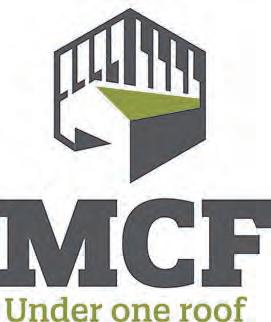
 WestVic Dairy hosted three interactive workshops on dairy farms across south-west Victoria during February to give farmers options to improve their feedbase and nutrition strategies.
Local farmers also opened their businesses for on-farm visits during the sessions at Pirron Yallock, Portland and Simpson.
WestVic Dairy hosted three interactive workshops on dairy farms across south-west Victoria during February to give farmers options to improve their feedbase and nutrition strategies.
Local farmers also opened their businesses for on-farm visits during the sessions at Pirron Yallock, Portland and Simpson.
// 21 DAIRY NEWS AUSTRALIA MARCH 2023 NEWS Providing structural steel and concrete panel solutions to agricultural, industrial, commercial and residential construction. Compost Barn Machinery Shed Fertiliser Shed Freestall barn Precast Panels Freestall barn MCF team is dedicated at providing end to end Design, Engineering and Construction solutions with a high level of customer satisfaction. MCF specialises in offering: • Structural steel fabrication • Precast panel construction and installation • Construction of new dairies, sheds, feed pads, free stall barns • Construction of industrial buildings 105 Old Dookie Road, Shepparton, VIC, 3630 0447 133 424 21 Nelson Street Numurkah, VIC 3636 0417 296 286 info@milnecf.com.au
Young guns on centre stage
AUSTRALIA’S BRIGHTEST young emerging dairy scientists have put forth their latest research to a national contingent as part of the Young Dairy Scientist Award at the Australian Dairy Conference in Hobart.
The ADC Young Dairy Science Award, sponsored by Boehringer Ingelheim, provides emerging scientists an environment to present, discuss and connect with leading dairy farmers and industry from around the country.
From a field of five, Beth Scott — a PhD candidate at La Trobe University — was awarded the winner at the ADC gala dinner in Hobart on February 16, after finalists had pitched their research findings during the day to more than 600 delegates at the conference.

Beth presented a piece of work titled Inbreeding remains a challenge for dairy populations, exploring the impact of genetic selection on inbreeding with previous projects focused on the genetic contribution towards stillbirths in the Jersey breed.
Beth grew up on a dairy farm in South Gippsland in Victoria, which perhaps sparked her lifelong interest in genetics — both in the on-farm and in the scientific arena.
She completed a Bachelor of Animal and Veterinary Bioscience in 2014 and a Master of Animal Science in animal breeding and genetics at the world-leading Wageningen University in the Netherlands.

Beth recently joined the team at Australian Fresh Milk Holdings as a business analyst, based in Orange.

ADC Young Dairy Scientist Award coordinator Richard Rawnsley said the award had become a notable high-level tertiary competition for emerging researchers, offering an opportunity to showcase their research at a broader industry level and to the ultimate end-users — dairy farmers.
“The award is designed to nurture scientific excellence and the young scientists must convince fellow dairy farmers and scientists that their research is soundly based and has exciting implications for the future of the dairy industry,” Richard said.
“Each young scientist must prepare a written article, present to conference and prepare an exhibit for display at conference.
“The scientist with the highest combined scores is awarded a $3000 travel bursary to further their field of study.


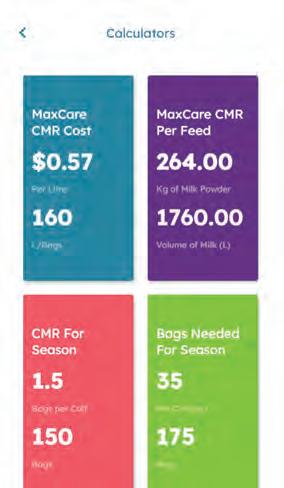
“The travel bursary is a significant prize offering the young scientist the opportunity to attend leading forums and workshops around the globe with considerable advancements for their learning and knowledge acquisition.

“Funding to extend their field of study is particularly important for these emerging scientists and the bursary has had a definitive impact on the careers of previous winners of the award.”

The other finalists were:







Laura Field, University of Melbourne;
Dr Chinthaka Jayasinghe, Agriculture Victoria Research;
Sarah Legge, University of Sydney; and Sineka Munidasa, University of Melbourne.
22 // DAIRY NEWS AUSTRALIA MARCH 2023 NEWS maxumanimal.com maxcareCMR Calf rearing at your fingertips. Quick & easy calculations Simple how to guides Product information Download the MaxCare Animal App today. Scan to download.
2023 Young Dairy Scientist Award winner Beth Scott with Sam Custodio from Ruminant Australia - Boehringer Ingelheim.
Recognition for hard work
SLTEC FERTILIZERS, a liquid fertiliser manufacturer based in northern Victoria, received both the Overall Business of the Year Award and Excellence in Manufacturing Award at a gala event recently held by the Campaspe and Murray shires.

When presenting the Excellence in Manufacturing Award, host Brian Nankervis said the judges considered SLTEC to be an outstanding business with a clear direction, putting in place a diverse team to work toward the continual growth of the business.
Mr Nankervis further said SLTEC had a strong focus on ensuring the best outcome for their customers with fertiliser that was best fit for each customer’s land and product.
SLTEC owner and managing director Jamie McMaster said the business started in 2005 with a vision to develop fluid fertilisers for the horticultural industry and had grown to presently employ 32 people at its world-class manufacturing facility in Tongala.
Although the business, in late 2021, was awarded a federal grant to rapidly expand its manufacturing facilities under the Supply Chain Resilience Initiative, Mr McMaster acknowledged it wouldn’t be anything without its customers and employees.

Mr Nankervis also said the judges found SLTEC had excellent HR practices and staff seemed very engaged across the various aspects of the business.
In a few minutes, SLTEC Fertilizers followed up its initial award with the Campaspe/Murray

Business of the Year gong.
Mr Nankervis said judges commended SLTEC’s commitment to their staff and customers, as well as their clear focus on growth
and expansion for the future of the company.
Mr McMaster said SLTEC Fertilizers was very proud of these outstanding achievements, which provided some tangible
acknowledgement for their years of growth, product research and innovation, manufacturing development and building an exceptional team and culture.
4front NEA2 is packed with Barenbrug’s proprietary intelligence to deliver




improvement over Bealey NEA2* in 24 year’s worth of trial data.
Advance your pasture productivity with 4front NEA2 perennial ryegrass. Talk to your Territory Manager or local supplier today. *And Base AR37. Mean of eight x three year trials, multi-year LSD (5%), CV=3.2%.

// 23 DAIRY NEWS AUSTRALIA MARCH 2023 PASTURE IMPROVEMENTS Freecall 1800 007 333 barenbrug.com.au Work smarter, grow more, with 4front NEA2.
SLTEC Fertilizers, based in northern Victoria, was recently recognised for its products, vision and HR practices.
significant
Grow with Confidence
Boom boosts sprayer
SILVAN AUSTRALIA has upgraded its 2500-litre and 3000-litre Paddock Pak sprayers with a fully galvanised 18-metre boom.

In addition to being galvanised for protection against corrosion, the self-levelling boom now includes hydraulic tilt and fold, and lift and parallelogram suspension.
Other features of the Paddock Pak include a choice of PTO or hydraulic pump, along with four different axle and tyre options.
A Polytuff impact-resistant polyethylene spray tank, complete with a calibrated fill sight line mounted on a galvanised chassis, is also a
feature of the 2500-litre and 3000-litre capacity sprayers.
Both are fitted with a 100-litre capacity freshwater tank mounted forward on the chassis for tank flushing or hand washing for operator safety.
Four different control options are available, from a three-section Silvamatic electric controller, a Bravo automatic spray rate controller, a Bravo 400S spray controller with guidance, or the ISOBUS compatible IBX100.
Other options ex-factory include two different foam markers, a Silmix chemical hopper and three or five section electric over hydraulic controls.
The base price for the 2500 litre Silvan Paddock Pak Sprayer is $49,390 including GST. ɋ For further information, call 1300 SILVAN (1300 745 826), email info@silvanaust.com.au or go to www.silvan.com.au
Zoom
– the king of annual ryegrasses
ZoomTM is a specialist winter feed. An ideal break crop between maize and other crops, it is very quick to establish and shows exceptional autumn/winter growth and rapid re-growth.
ZoomTM offers the advantages of excellent palatability and high metabolisable energy content.
ZoomTM can provide multiple grazings over autumn and winter before being shut up for high quality silage in the spring.
For further information on Zoom contact our regional agronomists:

VICTORIA, NORTHERN NSW & QUEENSLAND
PREPARE FOR FARM CHALLENGES
The Victorian and Federal Government-funded Farm Business Resilience Program has been extended.
The program aims to support Victorian farm businesses by providing new and experienced farmers with the opportunity to increase their knowledge and skills to better plan for the future and adapt to a changing climate.
Agriculture Victoria project leader
Kit Duncan-Jones said while Victorian farmers successfully managed uncertainty and complexity every day, the business of farming was becoming more challenging as farmers faced significant risks, such as future droughts, natural disasters and other industry challenges.
“The program supports farmers striving to better manage their business and strengthen their farm’s ability to withstand future shocks,” Mr DuncanJones said.
“If you’re a farmer who wants to put your plans on paper and commit your time to strengthen your knowledge and skills, this program will assist you to set up your farm for success, now and into the future.”
The program is being delivered online and face-to-face until June 2024. It includes short courses, workshops, webinars, field day sessions and farm walks to suit the varying needs of the farming community.
ZOOMTM IS AVAILABLE FROM YOUR LOCAL SEED MERCHANT OR FARM MERCHANDISE OUTLET Cropmark
Australia Pty Ltd Freephone: 1800 889 039 Freefax: 1800 889 037 www.cropmarkseeds.com
The program has resources available to support decision making such as the Farm Fitness Checklist and the Farm Business Plan Template, which allows farmers to conduct their own business assessments and planning.

Subscribe to the Farm Business Resilience Program Alert to keep up-todate with the latest information on program courses, workshops, services and resources.
For more information, contact Kit Duncan-Jones at kit.duncan-jones@ agriculture.vic.gov.au
For further information about the program, visit: www.agriculture.vic. gov.au/FBRP
Silvan has upgraded its Paddock Pak sprayers with a new boom.
24 // DAIRY NEWS AUSTRALIA MARCH 2023
PASTURE IMPROVEMENTS
Seeds
EASTERN
ADAM SHEEDY
NORTHERN VICTORIA &
SVEN KOLJO Ph:
WESTERN DISTRICTS, SOUTH AUSTRALIA,
BRUCE HUME Ph: 0427 607 375
Ph: 0428 132 096
SOUTHERN NSW
0429 375 452
TASMANIA
TM
It’s time to tackle oat rust

A STUDY that aims to reduce the impact of damaging crown rust, a fungal pathogen affecting Australian oat production, is being undertaken by The University of Sydney.
World-renowned crop disease expert Professor Robert Park will lead the research team, working with two Australian oat-breeding companies — Intergrain, with a focus on hay and milling oats, and S&W Seed Australia, which has a focus on grazing oats for livestock.
The Australian oat industry has been plagued by recurring epidemics of the destructive disease, crown rust, ever since oat cultivation began here.
It occurs globally and is considered the most important disease limiting oat production worldwide.
“Crown rust causes severe damage to oat crops in Australia and, due to ongoing losses of important resistance genes since the early 1990s, it has become an intractable constraint to oat production,” Prof Park said.

“Loss in grain yield can be as high as 50 per cent in susceptible varieties.”
Australia produces three oat types — grazing for the meat and livestock industries; hay for animal consumption; and milling for human or animal consumption.
Many grazing oat varieties with genetic resistance to crown rust were released in Australia from 1990-2020. Although resistant when first deployed, new rust strains emerged soon after rendering all these varieties highly susceptible to the fungal disease.
“Our project aims to reduce the impact of crown rust in Australian oat production,” Prof Park said.
“It will deliver robust genetic resistance to crown rust to all Australian oat growers.”
The University of Sydney team will work with researchers at Murdoch University and the Leibniz Institute of Plant Genetics & Crop Plant Research in Germany.
“The work with these colleagues will provide vital genetic expertise,” Prof Park said.

“The Leibniz Institute and Murdoch University are part of a global effort that is sequencing and characterising the oat genome. This work will accelerate our efforts to deliver oats with improved rust resistance to oat growers.
“We expect the project will also lead to







responsible stewardship of broadly effective crown rust resistance in all types of oat production in Australia, increasing grower profitability, reducing reliance on fungicides and underpinning planned growth in our export oat market.”
The team was awarded an Australian Research Council Linkage Grant to the value of $928,845.

// 25 DAIRY NEWS AUSTRALIA MARCH 2023 PASTURE IMPROVEMENTS Innovation. Quality. Solutions. ®IRONMAX Pro and Colzactive are registered trademarks of De Sangosse SA. 230213 Iron-fisted on slugs & snails. Gentle on the environment. • Next generation, iron-based, all weather slug & snail bait with technology for maximum attractiveness, palatability and persistence •Gentle on the environment, crops and non-target organisms
withholding period for grazing and harvest •Certified input for organic production
Professor Robert Park will lead a study into ways to reduce the impact of crown rust in oats.
•Nil
Spray drift focus
SOME OF the nation’s top agricultural peak bodies have approached government regulators and enforcement agencies about the potential for tougher laws and expanded e nforcement activity amid an increase in the number of spray drift incidents, estimated to have caused millions of dollars in damage.
Grain Producers Australia southern director and Victorian grain producer Andrew Weidemann said GPA supported an approach
THE OVER-SOWING SPECIALIST
that recognised those growers who were doing the right thing — while effectively identifying and addressing behaviours that put other growers at risk through increased compliance activities.
“If 99.9 per cent of growers are applying chemicals in their production systems the right way, we don’t believe the 0.1 per cent should be the standard by which our industry is judged — but we all know that’s the way it works, whether we like it or not,” Mr Weidemann said.
“However, in order to maintain public trust and confidence in the use of these pesticides that help ensure we can produce food that’s affordable and environmentally sustainable, we need a strong and effective regulatory system that can act to weed-out offenders with precise action.
“We all need to be proactive with managing these issues because we don’t want it to reach the stage where access to these pesticides is shut down for the majority of good operators, due to the poor practices of a few.
“We encourage all growers to reach out to GPA and share their concerns and put forward ideas on how we can work together and strengthen our approach, to solve these common problems.”
Mr Weidemann is also the independent chair of the National Working Party on Pesticide Application, which was established in March 2010 to conduct targeted research relating to spray drift and inform the spray drift management policy of the Federal Government registration authority and supply regulator of agricultural chemical products, the Australian Pesticides and Veterinary Medicines Authority.
The APVMA has undertaken significant work over the past decade to strengthen label instructions, restraints and warnings to reduce the risk of undesirable chemical spray drift, which has resulted in best practice improvements and introduction of new technologies.
Updating label instructions is an ongoing process and, while a major update of label instructions for 2,4-D products was completed in recent years, strengthening of label instructions for other phenoxy herbicides may be needed.
The APVMA employs a weight-of-evidence, risk-based model to regulate pesticides. The APVMA only registers chemical products where identified risks can be mitigated through specific application and safety instructions on the product label.
It is the role of state and territory government agencies to then ensure that registered products are only used in accordance with the approved label instructions.
Frenzy is a new very high yielding tetraploid hybrid (short rotation) ryegrass containing the NEA endophyte. Frenzy is extremely fast establishing with strong cool season growth and year-round yields. Its very fast establishment makes it ideally suited for stitching into old or run-out pastures as well as short term (2-3 years) specialist pastures.

For further information on Frenzy contact our regional agronomists: EASTERN VICTORIA, NORTHERN NSW & QUEENSLAND
0428 132 096
0429 375 452 WESTERN DISTRICTS, SOUTH AUSTRALIA, TASMANIA

FROM YOUR LOCAL SEED MERCHANT OR FARM MERCHANDISE OUTLET Cropmark Seeds Australia Pty Ltd Freephone: 1800 889 039 Freefax: 1800 889 037 www.cropmarkseeds.com
NSW EPA executive director of regulatory practice Tony Williams said the regulator was concerned by recent reports of chemical spray drift and would roll out compliance and education activities in affected areas.
“The EPA is working with NSW growers, crop sprayers, the Department of Primary Industries and other regulatory bodies to ensure everyone understands their obligations when spraying herbicides and pesticides,” Mr Williams said.

“It’s critical that appropriate training, storage and record keeping is completed to minimise risks to crops and communities.
“We understand farmers have been doing it tough lately, so we’re asking everyone to work together to protect their neighbours and the environment from spray drift.”
Anyone who suspects the use of products contrary to their approved label instructions, is urged to contact the EPA or the APVMA via: https://apvma.gov.au/node/86336
26 // DAIRY NEWS AUSTRALIA MARCH 2023 PASTURE IMPROVEMENTS
When spraying, always check beforehand for sensitive areas (like dairy pastures or homes) in your possible spray drift area.
FRENZY IS AVAILABLE
BRUCE
ADAM SHEEDY Ph:
NORTHERN VICTORIA & SOUTHERN NSW SVEN KOLJO Ph:
HUME Ph: 0427 607 375
Buybacks begin
THE FEDERAL Government has started the process of voluntary purchases of water to Bridge the Gap under the Murray-Darling Basin Plan.

The Federal Government said the water purchase was only for the remaining 49Gl of the Bridging the Gap target.
Bridging the Gap is the largest pool of water to be recovered under the Murray-Darling Basin Plan — a total of 2075Gl. Around 49Gl remains to be recovered.
Catchments to be targeted for water purchases in NSW are Murray (10Gl), Namoi (9.5Gl); NSW Border Rivers (5.1Gl); BarwonDarling (1.6Gl); and Lachlan (0.9Gl).
In Queensland, the Commonwealth is seeking 14Gl of surface water and the 3.2Gl of groundwater in the Condamine-Balonne catchment and said it was working with the ACT government to find 4.9Gl of surface water in that catchment.
The water will be bought water through a tender that will begin on March 23 through the AusTender website.
Decision slammed
Australian Dairy Farmers said it was disappointed by the way the Federal Government announced the buybacks without consulting those who are most affected.
ADF president Rick Gladigau said the move undermined transparency and stymied collaborative decision making on the basin plan.
“Dairy farmers have invested heavily to improve on-farm water use efficiency. It’s in farmers’ best interests to use water efficiently,” Mr Gladigau said.
“There are innovative projects which will enable more efficient use of water to achieve environmental outcomes, without the need to take more water from the consumptive pool.
“Dairy farms in the basin have already done the heavy lifting and paid the price with reduced milk production from the Murray dairy region and higher average water costs,.

“A further reduction in the consumptive pool will impact food security, not only on the eastern seaboard, but also to our international trading partners.
“This announcement has created stress and uncertainty in irrigation dependent communities.”

Irrigated dairy in the basin is a $1.67 billion industry that provides more than 8400 jobs in regional communities.
NSW MP Member for Murray Helen Dalton slammed the decision to commence buybacks.
She said the announcement puts at risk a $24 billion southern basin irrigated industry.
“This is not an argument of environment verse agriculture; it is about common sense and practicality,” she said.
“As farmers we need a sustainable and healthy environment to survive but we also need to have the means to grow food to feed our nation, and we cannot do that without a reliable irrigation allocation.”
She said the southern basin had already contributed 84 per cent of buybacks to date and that there was no more water left to give.
Victorian Farmers Federation Water Council chair Andrew Leahy said the upcoming buybacks would affect Victorian and South Australian farmers.
“We operate in a connected market and the 10Gl earmarked to be bought out of the NSW Murray will result in less water being available to irrigators across the southern basin,” Mr Leahy said.
“Buybacks are the cheap and nasty policy solution. Farmers are committed to working with all levels of government to deliver real outcomes for the basin.
“This can be achieved by looking at the evidence in front of us and ensuring we have flexibility in the basin plan.”
The Victorian Government has repeatedly
argued against more buybacks, most recently ahead of the February 24 ministerial council meeting of basin state water ministers.
“Victorians lived through the last round of buybacks, and we know they do not work,”
Victorian Water Minister Harriet Shing said.
“They take water out of the consumptive pool, pushing up prices and create greater risk to the water security of local businesses.”
To find out more about water purchasing in the basin, visit: https://www.dcceew.gov. au/water/policy/mdb/commonwealth-watermdb/strategic-water-purchasing
The new high yielding persistent Italian ryegrass

Appeal Italian ryegrass
is the newest addition to livestock menus.
It is a very persistent and very high yielding diploid Italian ryegrass.
Appeal has shown consistently high yield performance in trials with fast establishment, high winter, early spring production, and an ability to hold on well over the summer, even under moderate insect pressure. Being late heading, Appeal will maintain forage quality for longer into summer. Appeal produces high quality forage, of high nutritive value, high digestibility and high palatability. In addition, it has strong disease resistance including against rust, resulting in improved animal acceptance. And unlike some Italian ryegrasses, Appeal will not cause grass staggers.
APPEAL IS AVAILABLE FROM YOUR LOCAL SEED MERCHANT OR FARM MERCHANDISE OUTLET

// 27 DAIRY NEWS AUSTRALIA MARCH 2023 PASTURE IMPROVEMENTS
The Federal Government has announced it will start a new round of water buybacks from NSW and Queensland.
Cropmark Seeds Australia Pty Ltd Freephone: 1800 889 039 Freefax: 1800 889 037 www.cropmarkseeds.com For further information on Appeal contact our regional agronomists: EASTERN VICTORIA, NORTHERN NSW & QUEENSLAND ADAM SHEEDY Ph: 0428 132 096 NORTHERN VICTORIA & SOUTHERN NSW SVEN KOLJO Ph: 0429 375 452 WESTERN DISTRICTS, SOUTH AUSTRALIA, TASMANIA BRUCE HUME Ph: 0427 607 375
New branch has new brands


Horwood Bagshaw Scaribars are among some of the new products being offered by the newly-opened TTMI branch in Colac.
TTMI HAS opened another branch in Victoria’s south-west, throwing open its doors in Colac in early February.
“It’s an exciting time for our business because, with the addition of branches in Warrnambool and Colac, we now have complete coverage of western Victoria, and are able to offer two new brands to this region where broadacre businesses are particularly prominent,” TTMI dealer principal Jason Henry said.
TTMI Colac will, for the first time, offer the CNH Industrial seeding brands Horwood Bagshaw and Flexi-Coil equipment.



Jason said Horwood Bagshaw’s seeding equipment, fertiliser spreader range and laser buckets would appeal to customers right across TTMI’s dealer network.

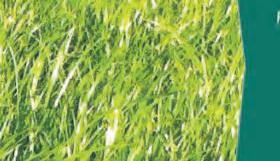
“This is the type of equipment that broadacre customers in this region need access to and which can make a real difference to the efficiencies and productivity of a large-scale operation,” he said.

CNH Industrial Seeding & Tillage national sales manager David Gibson said they were excited to welcome the team from TTMI as the brands’ representatives in south-western Victoria.
“TTMI have long been a high performing dealer and that is because of their ongoing dedication to their customers,” David said.

“It presents a great opportunity for our customers with access now to the two new dealership locations in Warrnambool and Colac and the associated service and support infrastructure that’s so critical for local farmers.”



David said the Horwood Bagshaw Compact ScariBars with Mounted Air Seeders (manufactured in Mannum, South Australia) were well suited to the region, offering top-level performance in a robust package for mid-range HP tractors.

Horwood Bagshaw’s range of trailed spreaders also offers a great opportunity for customers in the region. Equally, trailed air seeders from Horwood Bagshaw and Flexi-Coil consistently delivered high performance with increased seeding productivity.




Jason said the two new branch locations would work closely together to support customers, and in turn add to the overall expertise and service focus of the TTMI network.
TTMI also has three branches in Victoria’s Gippsland area and two in Tasmania.













28 // DAIRY NEWS AUSTRALIA MARCH 2023 PASTURE IMPROVEMENTS A proven versatile blend of late maturing diploid & tetraploid enhanced perennial ryegrass, persistent white & red clover. (03) 5659 2314 www.notmanpasture.com.au/vatbuster VATBUSTER
Agsafe delivers bagMUSTER
AGRICULTURAL STEWARDSHIP organisation, Agsafe, has been named as the provider of new agricultural plastics recycling program, bagMUSTER.
bagMUSTER is led by CropLife Australia in partnership with the Australian Seed Federation.
Australian Seed Federation CEO Katherine Delbridge said plastic packaging had an important role to play in Australian agriculture by protecting inputs like seed during transport and storage.
“Input industries therefore have an important role to play in ensuring the resulting plastic waste is recycled in an environmentally and socially responsible way,” Ms Delbridge said.
CropLife Australia CEO Matthew Cossey said Agsafe was chosen following a competitive selection process.
“As the existing service providers for CropLife’s industry stewardship programs drumMUSTER and ChemClear, Agsafe was clearly the front runners, able to demonstrate how their established infrastructure and community relationships could be augmented to effectively deliver bagMUSTER,” Mr Cossey said.
“These programs were developed by CropLife more than 30 years ago and Agsafe has run them since that time and has developed expertise second to none in such programs.”
Ms Delbridge said the strategic partnership with CropLife to deliver bagMUSTER was critical for meeting Australian Packaging Covenant obligations and efforts to address the Recycling and Waste Reduction Act.
“Through bagMUSTER, collected bags will be processed right here in Australia. This will support efforts to boost recycling capability and technology development in Australia,” she said. “Following a program pilot, bagMUSTER
NEW CHIEF APPOINTED
Dr Bertie Hennecke has been appointed as the new chief environmental biosecurity officer for the Department of Agriculture, Fisheries and Forestry.
Deputy Secretary of Biosecurity and Compliance Chris Locke welcomed Dr Hennecke’s appointment.
“Dr Hennecke’s background is in natural resource management, invasive species, and agricultural sciences, with almost 30 years of experience in the public service and academia in Australia,” Dr Locke said.
“He also holds a PhD in Botany and a master’s degree in International Agriculture and has held senior leadership roles in the ABARE and several of the department’s plant biosecurity areas.
“The role of the chief environmental biosecurity officer is to liaise between government and the community to raise awareness and build Australia’s capacity to manage biosecurity risks.
“I congratulate Dr Hennecke on his appointment and wish him the best of luck in this position.
“We also thank outgoing chief environmental biosecurity officer Dr Robyn Cleland for her significant contributions to environmental biosecurity during her time in the role and wish her all the very best in her retirement.”
will be industry-funded. Companies who import, manufacture and supply bags or import pre-packaged products will contribute on a feefor-service basis to minimise costs on the farming sector.”

For more about bagMUSTER, visit: bagmuster.org.au

Setting new benchmarks for late season quality in Annual ryegrass

Dash annual ryegrass is fast establishing, high yielding, high quality and very palatable. Being later heading, higher pasture quality will be maintained for longer into spring, translating into higher stock performance during this critical period.

If you are looking for an 8-10 month winter feed, then add Dash to your stock’s diet. It is a great feed and makes great silage and hay.
 Agsafe, which also delivers the drumMUSTER and ChemClear programs, is the new bagMUSTER provider.
Agsafe, which also delivers the drumMUSTER and ChemClear programs, is the new bagMUSTER provider.
// 29 DAIRY NEWS AUSTRALIA MARCH 2023 PASTURE IMPROVEMENTS DASH IS AVAILABLE FROM YOUR LOCAL SEED MERCHANT OR FARM MERCHANDISE OUTLET Cropmark Seeds Australia Pty Ltd Freephone: 1800 889 039 Freefax: 1800 889 037 www.cropmarkseeds.com For further information on Dash
our regional agronomists: EASTERN VICTORIA, NORTHERN NSW & QUEENSLAND ADAM SHEEDY Ph: 0428 132 096 NORTHERN VICTORIA & SOUTHERN NSW SVEN KOLJO Ph: 0429 375 452 WESTERN DISTRICTS, SOUTH AUSTRALIA, TASMANIA BRUCE HUME Ph: 0427 607 375
contact
The benchmark for production and performance
Room to grow blooms
IN THE middle of the drought, Jenny Jenner’s husband bought her a bunch of sunflowers from the supermarket.
The Queensland farmer put them in a vase on her kitchen bench, where she admired their thick manes of bright yellow petals and big round faces.
As the Jenners started running out of water during the historic dry spell, this sweet and simple marital gesture changed their luck.
“I thought ‘these will be easy to grow’,” Jenny said.
Now one million sunflowers are waiting to burst into bloom on their farm at Kalbar, in the Scenic Rim region, replacing the hectares of lucerne they used to grow.

The 9ha sunflower crop is a few metres from their back door, a constant happy presence.
“They’re just like people: there’s some tall ones, some short ones, skinny ones, fat ones, some that are just special,” Jenny said.
“You’d think that because there’s a million they’re all exactly the same, but they’re not.”
The couple is hosting the third Kalbar Sunflower Festival across three days from March 10, an idea inspired by other farmers’ frustrations at tourists trampling through their crops to take photos.
Seeing an opportunity, the Jenners built walking tracks through their field allowing festival-goers to pose for photos, get lost in a sunflower maze and dine and dance through the towering stalks.
“They’re a really happy flower. I’ve never seen anybody leave without a smile on their face,” Jenny said.
The eastern states of Australia turn yellow throughout February and March, the typical sunflower season.
Major commercial crops grow in Queensland and NSW, though farms are springing to life in Victoria and Western Australia as well.
Proven, reliable, persistent and high performing.

Matrix® Enhanced perennial ryegrass truly is the benchmark for production and performance on Victorian dairy farms. It is thoroughly proven, reliable, persistent and high performing.

Many farmers would argue that there is simply no better perennial ryegrass. The cows won’t argue with that either. They find it very palatable and eat it readily.
Farmers tell us the milk production lifts when the cows are grazing Matrix.
Matrix is suitable for all pasture renovation, including over-sowing and is great value for money at about $100 per hectare cheaper than some varieties.
MATRIX IS AVAILABLE FROM YOUR LOCAL SEED MERCHANT OR FARM MERCHANDISE OUTLET
According to the Australian Sunflower Association, which represents growers, the flowers were grown for oil and margarine throughout the 1970s, before moving towards monounsaturated oil varieties as consumers became more health-conscious.
The association said there was a growing market here and in Asia for bird seed, livestock feed, confectionary, oils and spreads.
For Victorian farmer Laiken Britt, growing sunflowers is a way to do her own thing on the family’s dairy, cattle and sheep operation at Dunnstown, near Ballarat.
“We have four boys, so I said ‘I’m sick of doing all this boy stuff, let’s grow something for me’,” Laiken said.
While some locals laughed at her for growing sunflowers in a climate too cool to harvest the seeds, Laiken decided to open the crop to visitors, charging $2 per stem.
Her pick-your-own business attracts huge crowds every season, often mothers and daughters holidaying together, couples celebrating weddings or births and families forging new traditions in a field of flowers.
“It’s the best job you could ever think of,” she said.
“My husband is the blokiest bloke you can imagine and he’ll be down there frolicking around, helping the old ladies cut their flowers.
“It feels like a community. They’re real enthusiasts, those sunflower lovers.”
30 // DAIRY NEWS AUSTRALIA MARCH 2023 PASTURE IMPROVEMENTS
Farmers are finding growing and showing sunflowers provides a handy complementary income. AAP Image/Supplied by Kalbar Sunflower Festival, Flynn Graham
Cropmark Seeds Australia Pty Ltd Freephone: 1800 889 039 Freefax: 1800 889 037 www.cropmarkseeds.com For further information on Matrix contact our regional agronomists: EASTERN VICTORIA, NORTHERN NSW & QUEENSLAND ADAM SHEEDY Ph: 0428 132 096 NORTHERN VICTORIA & SOUTHERN NSW SVEN KOLJO Ph: 0429 375 452 WESTERN DISTRICTS, SOUTH AUSTRALIA, TASMANIA BRUCE HUME Ph: 0427 607 375
Heifers are a weighty issue
BY DR GEMMA CHUCK
THE FUTURE reproductive and lactation performance of your herd relies on the optimal management of heifers from birth.
The typical cost of rearing a heifer from birth until first calving at 24 months of age is $2000 to $3000, excluding labour costs.
Growing heifers well allows them to reach sexual maturity at an earlier age, allowing earlier breeding which results in a younger age at first calving.
The cost of rearing a heifer is reduced if her age at first calving is reduced.
It is also critical that heifers calve without difficulty, perform well in the dairy and get back in calf easily during their first lactation.
Australian data collected from a year-round calving herd showed the optimal age at first calving was 24 to 30 months of age, as these heifers had the highest first lactation production, highest estimated lifetime production and maximum days of productive life.
Heifers calving for the first time at greater than 30 months of age had decreased first lactation production and decreased days of productive life.
With more heifers entering the herd, the overall herd age will be younger. Younger animals tend to be more fertile and have fewer milk quality issues than older cows as they have had less opportunity to develop mammary infections.
A younger herd age also allows selective culling of older animals and any excess heifers
can be sold locally or globally as an alternative source of income.

What is the correct weight for heifers?
The target body weight for a heifer at her first calving is 94 per cent of her mature body weight. This will vary with breed and genetics. For example, if the average ‘ideal’ mature cow in a herd is 600kg, a heifer should be calving at 564kg. And, if the average ideal mature body weight is 650kg, then heifers should be calving for the first time at 611kg.
Heavier heifers at first mating are more likely to show sexual activity than lighter heifers. Therefore decisions around first mating should be based on body weight, not on age.
In seasonal and split calving herds, heifers at first mating may be between 13 and 15 months of age.
This means the youngest animal in the group must be sufficiently grown so there is the best
EMERGENCY PLAN HAS NEW LEAD
Animal disease specialist Mark Cozens will be the new lead for Australia’s Veterinary Emergency Plan.
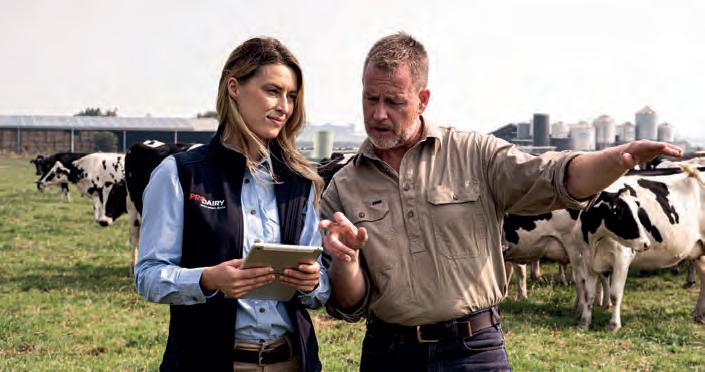
He started at Animal Health Australia, as the head of program, in early February.
Dr Cozens is a senior veterinarian with experience in government and private sectors, and has worked overseas on responses such as foot and mouth disease and anthrax, and in Australia on responses to Newcastle disease, equine influenza, Hendra virus and white spot disease.
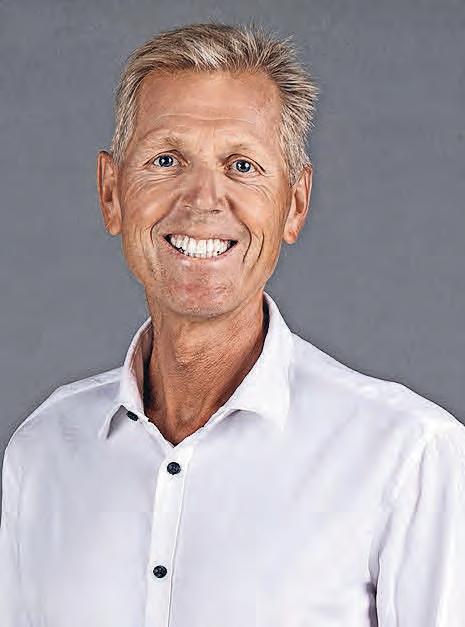
Animal Health Australia CEO Kathleen Plowman welcomed Dr Cozens to the organisation and said she had no doubt he had the expertise to ensure AHA’s members were prepared and ready to respond in the event of an emergency disease outbreak.
“The AUSVETPLAN is Australia’s game plan to an agreed approach around how we combat emergency animal diseases and Mark will play a lead role, alongside his team, to work closely with government and industry representatives to enhance response readiness for all our members,” Ms Plowman said.
Dr Cozens takes on the role from Peter Dagg and said he looked forward to continuing to bring the AUSVETPLAN into a new era and ensuring it remained fit for purpose.
“I’ve worked in the emergency animal disease preparedness and response area for many years, in multiple countries and jurisdictions across Australia, and am excited to do my part in bringing government and animal industries together and reach consensus on very important emergency animal disease policy issues,” Dr Cozens said.
heifer at first calving, will produce an extra 1041 litres of milk, 38.5kg butterfat and 42.5kg of protein over the first three lactations.
In addition to the positive effects on reproductive and lactation performance, heifers with a heavier body weight at first calving have increased longevity compared to poorly grown heifers. This is likely due to their improved fertility and fewer health problems.
How can I help my heifers achieve this?
chance for her to get in calf quickly and easily.
The target body weight at first mating is 60 per cent of her mature cow bodyweight.

Commonly smaller heifers are carried over to a younger group so they have more time to grow out prior to first mating.
This delay means there is an increased age at first calving which significantly reduces profitability as the heifer has taken more time and money to rear.
Long-term benefits of heavier heifers
After first calving, heavier heifers are more likely to show a heat prior to mating start date and have better first service conception rates than lighter heifers.
They also have fewer calving problems and have better transition into the milking herd. The impact of body weight on lactation performance has also been demonstrated.
Research has shown that a 50kg heavier
An objective assessment of heifer performance can be achieved by monitoring growth between weaning and first calving.
This ensures that the average daily gain of heifers can be monitored so that they can achieve their target weights at the critical times of first mating and calving.
Small heifers can be identified early, allowing strategic intervention to reduce the risk of them being carried over to a younger group.
Routine animal husbandry procedures such as vaccination and drenching can be carried out at the same time as weighing to reduce any additional handling or stress.
It is worth discussing heifer performance with your veterinarian to enable correct analysis and interpretation of the data and accompanying nutritional advice.
Dr Gemma Chuck works for Apiam Animal Health in the dairy operations team where she writes technical service programs for farmers and vets.
by Dairy Vets.
Dr
Animal Health Australia to lead the development and review of response strategies for emergency animal diseases.
“With diseases such as foot and mouth disease and lumpy skin disease posing significant threats to Australian animal industries and governments, it is important we have strategies that are contemporary, that the policy is informed on the best available science and that government-industry agreed approaches to manage emergency animal diseases are clearly articulated and able to be rolled out effectively.”
Animal Health Australia currently manages 66 AUSVETPLAN documents including more than 30 disease-specific plans. Read more on the Animal Health Australia website.
PROACTIVE
BIOSECURITY
PLANS
TO MITIGATE THE RISK OF NEW DISEASES ENTERING YOUR HERD.
ProDairy can assist you with the development of a tailored plan:
• On-farm visit by a ProDairy veterinarian.
• Review of the current biosecurity principles, the major risks and actions taken to reduce those risks.
• Development of a customised biosecurity plan. Visit prodairy.com.au for more information.
 Mark Cozens joins
Mark Cozens joins
// 31 DAIRY NEWS AUSTRALIA MARCH 2023 ANIMAL HEALTH
PRODAIRY.COM.AU SCAN TO FIND OUT MORE.
Australian data collected from a year-round calving herd showed the optimal age at first calving was 24 to 30 months of age.
PRODAIRY. WE’VE GOT YOU COVERED. Designed for Dairy Farmers. Delivered
Pipeline is in the pipeline
WORK
ON the Newry pipeline
component of the Macalister Irrigation District Phase 2 Project in Gippsland is under way.
The Newry pipeline contract was announced in September 2022 and will be delivered as part of Phase 2 of the $159.7 million MID modernisation program.
The works will deliver around 4300 megalitres in water savings and increase delivery efficiency to customers to more than 90 per cent.
This will drive vital investment in on-farm efficiencies, improve farm productivity and support local businesses to be more climate resilient.

The MID Phase 2 project is replacing 100-year-old channels with new pipelines and automated outlets.
Transitioning to a reliable piped supply means water is not lost from leakage or evaporation and increases environmental outcomes with a reduction in farm run-off into waterways.

The project includes the installation of the Newry pipeline, including associated outlet upgrades, reconnection works and decommissioning for Newry customers.
The MID is the largest irrigation district in southern Victoria, with a strong dairy sector and developing vegetable and cropping industries, contributing more than $500 million to the Victorian economy.
This landmark project is vital to the efficient production of food and fibre across Victoria, while delivering significant benefits for the
environment through increased environmental flows.
“We are excited to start work on the Newry Pipeline Project,” Southern Rural Water
managing director Cameron FitzGerald said.
“This major infrastructure upgrade is a win for Gippsland and will markedly increase both water delivery efficiency and customer
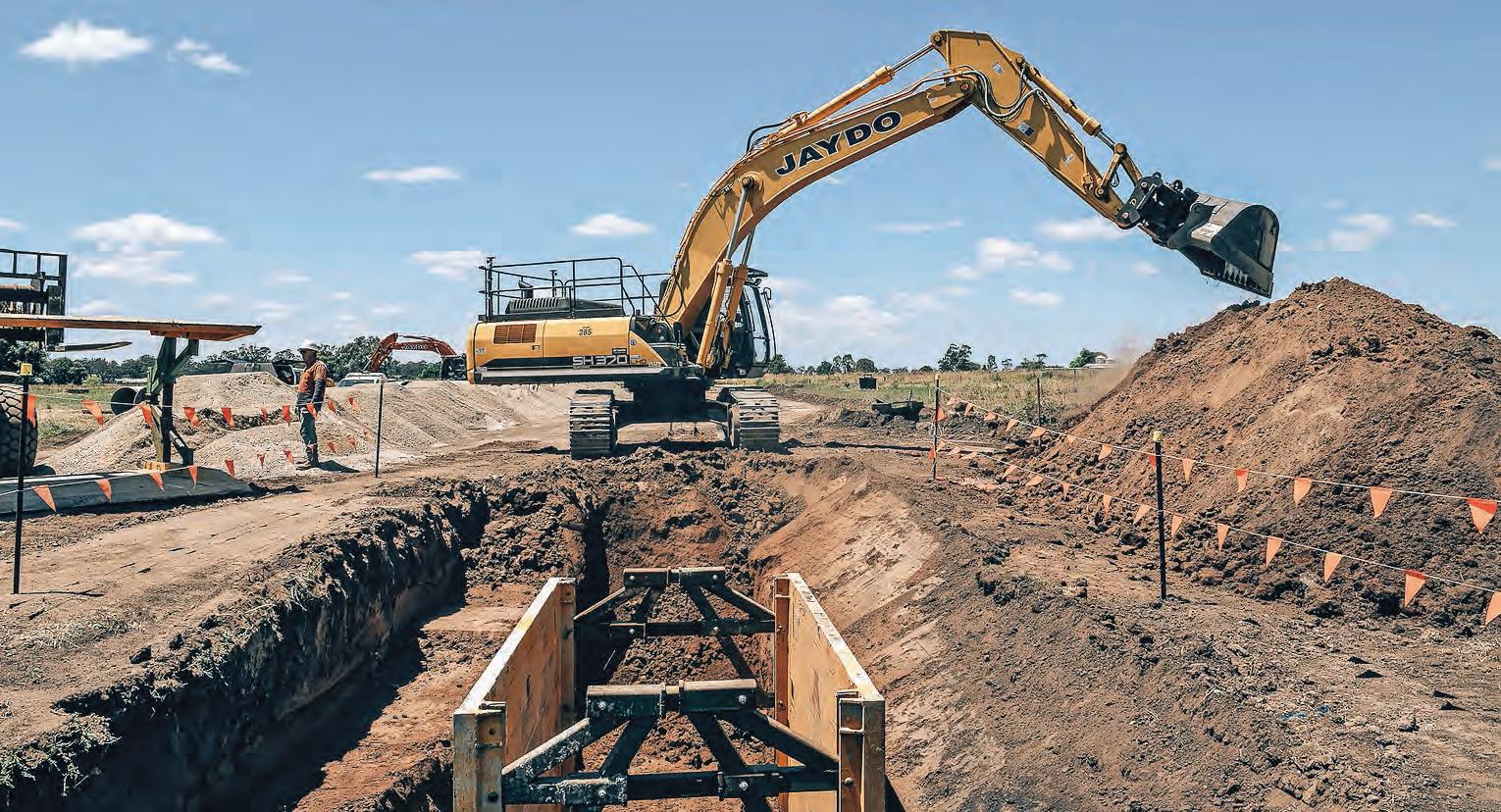
service levels.”
The MID Phase 2 project is funded by the federal and Victorian governments and Southern Rural Water.
LABOUR SAVING
McIntosh Multi Bale Feeders



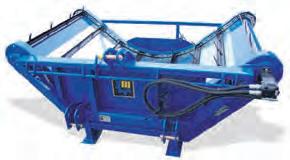
These

32 // DAIRY NEWS AUSTRALIA MARCH 2023 MACHINERY & PRODUCTS To find your nearest dealer, please contact: www.tracmac.com.au 03 5625 1522
Southern Rural Water’s construction partner, Jaydo Construction, has started works on the Newry pipeline component of the MID Phase 2 Project in Gippsland.
IF YOU ARE A LARGE HERD OWNER AND DO MULTIPAL TRIPS FEEDING YOUR HERDS, THEN THE McINTOSH MULTI 4 OR MULTI 5 BALE FEEDER IS THE MACHINE FOR YOU.
award winning bale feeders have been carefully designed to handle all types of Round bale silage and hay, without fuss. With its bale capacity, clever design and rugged construction, that makes the Multi bale feeder simple and easy to operate.
Tech tracks water intake
SMAXTEC HAS launched what it claims is the world’s first system that accurately records the drinking frequency and daily water intake of individual cows.
The new TruDrinking function adds another layer of accuracy to the company’s state-ofthe-art fertility and health monitoring system.
smaXtec is distributed in Australia by Lallemand Animal Nutrition, a leading supplier of microbial and associated technology used in the livestock and forage production sectors.
Lallemand’s Australian animal nutrition managing director Alex Turney said water intake was not only essential for milk production but was an early indicator for health.
“Water is often the forgotten nutrient in dairy herds,” he said.
“Cows need to consume three or four litres of water to produce one litre of milk.
“Any reduction of intake can significantly decrease feed intake and milk production.”
Drinking behaviour is an important indicator of health.
“If a cow is drinking less water, it can be assumed she is ill and will produce less milk,” Alex said.
“Monitoring the water intake of individual cows makes it possible to detect and treat disease even faster.
“In many cases, managers can detect emerging diseases up to four days before visible symptoms appear.
“This information can be extremely useful at calving when the cow is facing a range of physical and metabolic challenges.
“Any disruption to water intake can also be an indicator of a problem with water quality or accessibility.”
The smaXtec herd monitoring system utilises state-of-the-art rumen boluses to monitor minute changes in body temperature around the clock.
Collected data is transferred to the cloud via readers positioned around the property and easily accessed using a smartphone, tablet or computer.
Complex algorithms are then used to predict cow activity, water intake, drinking frequency, rumination status, oestrus and animal health issues such as mastitis.
The dashboard provides a clear and precise overview of the real-time health, reproductive and feeding status of the herd and individual cows.

Automatic alerts and recommended actions can be sent via any nominated messenger service.
TruDrinking is available as a new function on all existing smaXtec systems.
smaXtec has been commercially available in Australia for five years.
Initially used by research facilities, the technology has gradually made its way into more than 50 commercial herds in Australia and New Zealand.
“As a guide, a complete system might cost less than $40,000 in hardware and $15,000 a year in subscription fees for a 500-cow dairy but it can very quickly pay for itself,” Alex said.
Higher levels of milk harvested, lower vet bills, low medication costs and faster reproductive cycles all contribute to more profit.
“Labour is one of the greatest limitations on every dairy farm,” he said.
“smaXtec provides 24/7 monitoring, allowing you to detect the slightest changes in behaviour more accurately and regardless of the weather.
“It allows managers to intervene before sub-clinical cases of milk fever, ketosis or mastitis become expensive clinical cases.
“A single case of mastitis can easily cost $500 to $800 in veterinary bills.
“The other big thing is that it keeps cows in the milking herd — once a cow is sick, it never recovers its peak production potential.
“Improved heat detection is the low hanging fruit — every cow in calf one cycle earlier represents a saving of minimum $150.
“The addition of TruDrinking to the smaXtec system provides even deeper and unparalleled insights into animal health, fertility and productivity.”
Sera n Machinery have a passion for introducing innovation into the agricultural industry and providing customers with exceptional service and quality products at the best prices. Each day they strive to be the tillage and seeding specialists.


• Selling quality equipment at competitive prices

• Ensuring every experience is A+ rated
• Exceptional staff who share the same values as the company
• Industry leading manufacturing, assembly & Servicing facilities.

SERAFIN ULTISOW NARROW FOLD
Fully powder coated frame using a two-stage process
Minimum row spacing of 150mm with narrow depth wheel tted
5m – 7m Working Width with a 3m folded Transport width
Fitted with Sera n SM2022 row units
SEMEATO TDNG 300E

Versatile 170mm spacing that suits most applications
Simple metering system with easy calibration
Hydraulic adjustable down pressure on row units
Large capacity seed & feet box with adjustable baf e internally
02 6963 5588
www.sera nmachinery.com.au
403 Thorne Road Grif th NSW 2680
The new TruDrinking function adds another layer of accuracy to smaXtec’s state-of-the-art fertility and health monitoring system. // 33 DAIRY NEWS AUSTRALIA MARCH 2023 MACHINERY & PRODUCTS
YOUR SEEDING & TILLAGE SPECIALISTS
Henty celebrates 60 years
THE HENTY Machinery Field Days will celebrate its 60th anniversary on September 19 to 21.




“Community groups of all types, including sporting clubs, schools and improvement committees from around the region contribute to the preparation and running of the event through catering and providing services,” HMFD chief executive officer Belinda Anderson said.
“The vision of our founding members is what you see today. Sixty years on we have become one of the largest agricultural field

days in Australia and must-see destination on the agricultural calendar.”
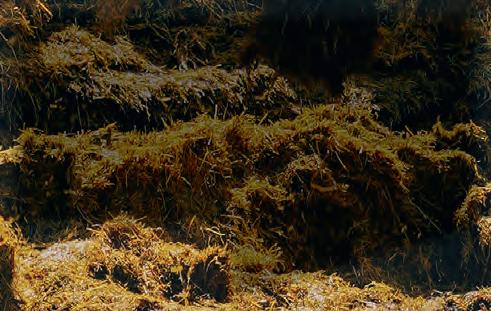


The first official field day was held at the Henty Showgrounds in 1963 following a oneday header school in November 1961 organised by Milton Taylor, secretary of the Henty branch of the Farmers and Settlers’ Association.
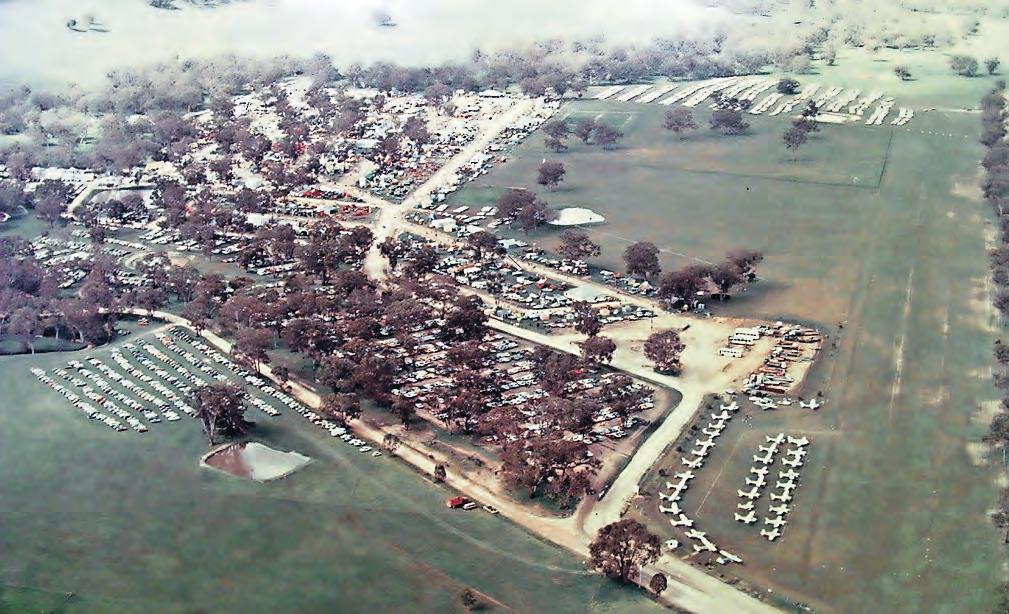
Culcairn farmer Eddie Thomas stepped into the position of chairman of the newly formed Henty Machinery Field Days committee for the first official event in October 1963 at the Henty Showgrounds.
The event was held on private properties in the Henty area until 1976 when it found a permanent site on a former travelling stock reserve on Cookardinia Rd.

The 60th anniversary event will have all the usual attractions including the prestigious Henty Machine of the Year Award, the working and three sheepdog trials, Country Lifestyle pavilion, Farm Gate Produce Market, Baker Seeds agronomy trials, helicopter joy rides, live entertainment and the Natural Fibre Fashion Awards.
A vintage display by the Henty and District Antique Farm Machinery Club will commemorate the change in technology over the past six decades.
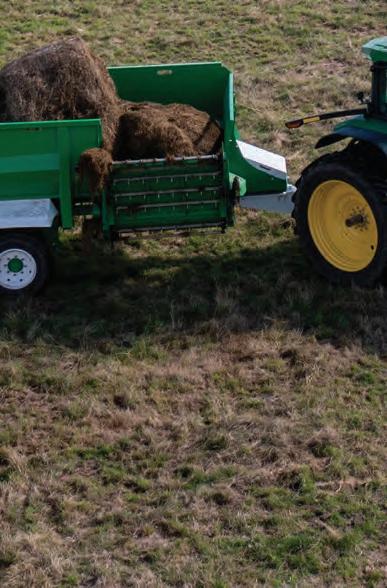
Also back this year will be the exhibitor awards for Best Outdoor Large Commercial, Best Outdoor General and Best Indoor (Country Lifestyle and Farm Gate).
Applications for all exhibitors will open midMarch with returning exhibitors able to rebook their 2022 site until April 30. Check the website for more information.
GRAB & GO
An aerial view of the 2022 Henty Machinery Field Days, which drew a record crowd of 70,000 to view more than $120 million worth of machinery and technology.
34 // DAIRY NEWS AUSTRALIA MARCH 2023 MACHINERY & PRODUCTS GRABMAX SILAGE GRABS TOUGH, VERSATILE SILAGE GRABS. • Can load up all kinds of feed • Compact, strong design • Unique clamp radius • Available from 1.6m x 2.4m wide for more information visit hustlerequipment.com | 1800 750 428 or 0435 371 311
COMBI RX FEEDOUT WAGONS THE BIGGEST INNOVATION OF FEEDOUT WAGONS EVER. • Chainless rear floor for reliability • Stepless 2.55 m wide main bin • Impact-resistant floors • Easy fingertip FeedControl
An aerial view of the 1977 Henty Machinery Field Days, the second year at its new home.
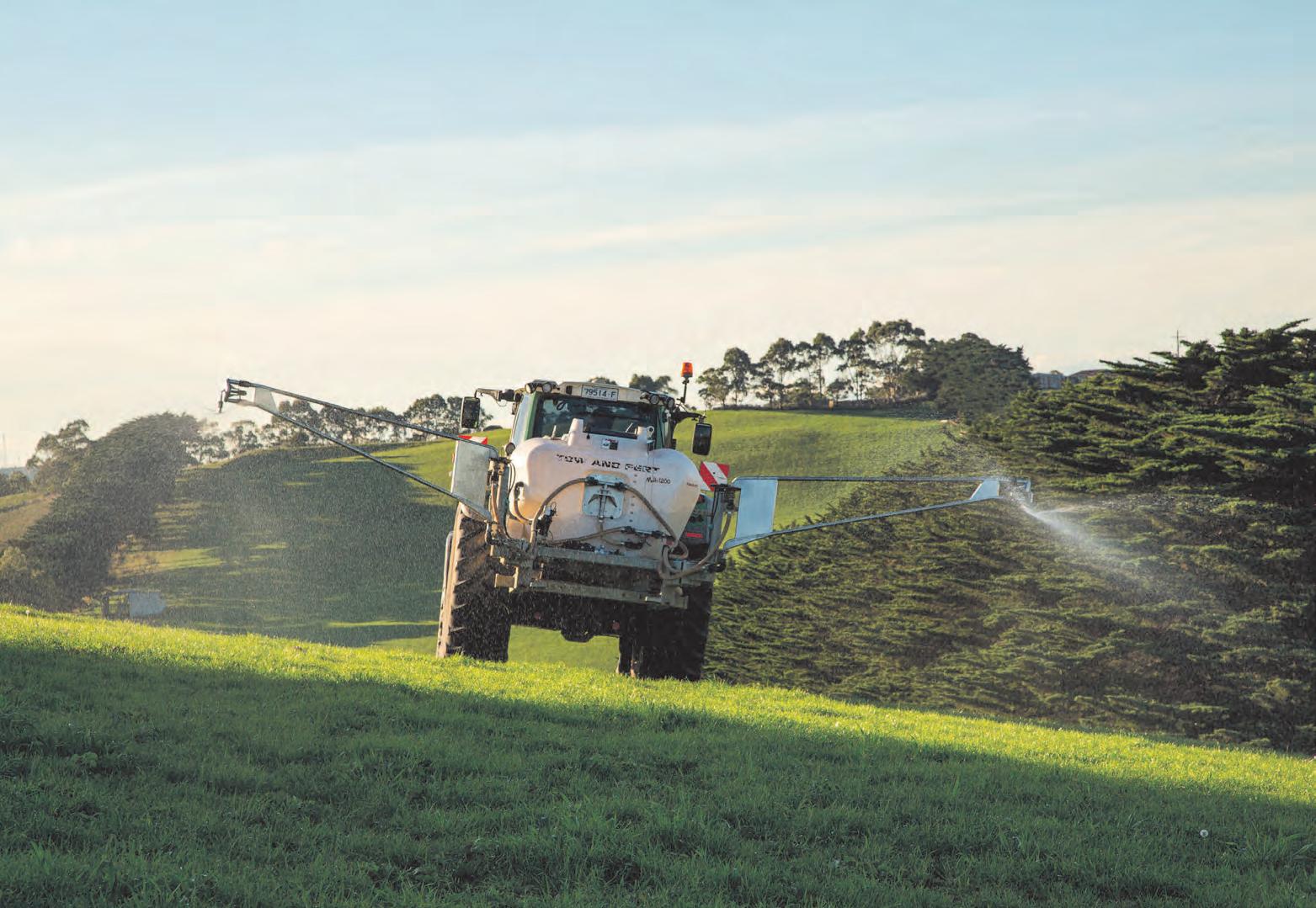









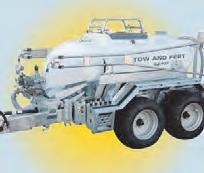




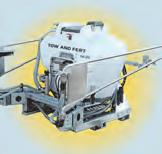





Available in 5 models. Tow and Fert. There is one for your farm. A Tow and Fert is a SMART BUSINESS INVESTMENT Image shows spraying with a Tow and Fert Multi 4000 on Josh Stephens farm in Camperdown, Victoria www.towandfert.com.au Multi 500 Multi 1000 Multi 1200 Multi 2800 Multi 4000 We have been able to reduce our synthetic N to almost nothing and we are not tied into a high input system. With the cost of urea now, it’s a really good cost to avoid. Owen Billing, Dairy Farmer Tow and Fert Multi 1200 Owner “ “ I think getting a Tow and Fert was probably the game changer in our farm business and contracting. I think the Tow and Fert and foliar spray is the way of the future. Josh Stephens, Dairy Farmer/Contractor Tow and Fert Multi4000 Owner “ “ Reduce ‘N’, Apply Capital Fert, small seeds & more, all from one tank. Image shows spraying with a Tow and Fert Multi 1200 onOwen Billings farm in Gippsland, Victoria







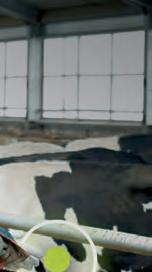
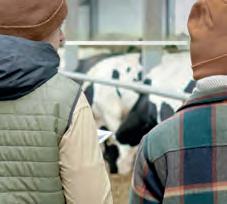


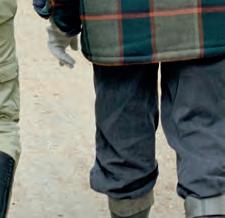






































THE HEALTH SYSTEM that future-proofs your dairy farm. For higher profitability AND a healthier herd! CONTACT US TODAY FOR MORE INFORMATION! Lallemand Animal Nutrition | E: LAN-Aus@lallemand.com | T: +61 7 5451 0125 consistent MILK YIELD fewer MASTITIS CASES reduced ANTIBIOTIC USAGE a better INSEMINATION INDEX easier CALVINGS comprehensive COST SAVINGS reduced WORKLOAD & STRESS The unique smaXtec bolus technology provides you with unparalleled data and insights into your herd‘s health. HEALTHIER COWS ENABLE: YOUR BENEFITS: overview of each cow’s drinking behaviour early indicator for reduced milk production · immediate detection of irregularities in water provision, e.g. contamination, stray current · increased animal health Brand new: smaXtec TruDrinking The world‘s first technology for quantifying water intake! Measure water intake PER COW. SUCCESS STORIES from customers around the world














































 Dr Frank Mitloehner says policies and political support are needed to encourage farmers to make changes to reduce their greenhouse gas emissions.
Dr Frank Mitloehner says policies and political support are needed to encourage farmers to make changes to reduce their greenhouse gas emissions.

















 Saputo chief executive officer Lino Saputo on the site of the new, expanded, manufacturing facility at Smithton. Building and fit out will be completed by spring 2023, in time for new season milk.
Saputo chief executive officer Lino Saputo on the site of the new, expanded, manufacturing facility at Smithton. Building and fit out will be completed by spring 2023, in time for new season milk.





































































 Annabelle pictured at her breakfast bar, with lawn clippings.
Annabelle and Kaihla at her wedding in 2009.
Photo: Tamara Cadd Photography
Annabelle pictured at her breakfast bar, with lawn clippings.
Annabelle and Kaihla at her wedding in 2009.
Photo: Tamara Cadd Photography



































 Jarrah Farms started working with the CowManager system in 2020.
Photo: Kimberley Teske Fetrow
Jarrah Farms started working with the CowManager system in 2020.
Photo: Kimberley Teske Fetrow



























 Western Australian dairy farmer Dale Hanks’ world was turned upside down in 2016 when his supplier ceased collecting their milk.
Western Australian dairy farmer Dale Hanks’ world was turned upside down in 2016 when his supplier ceased collecting their milk.























 WestVic Dairy hosted three interactive workshops on dairy farms across south-west Victoria during February to give farmers options to improve their feedbase and nutrition strategies.
Local farmers also opened their businesses for on-farm visits during the sessions at Pirron Yallock, Portland and Simpson.
WestVic Dairy hosted three interactive workshops on dairy farms across south-west Victoria during February to give farmers options to improve their feedbase and nutrition strategies.
Local farmers also opened their businesses for on-farm visits during the sessions at Pirron Yallock, Portland and Simpson.


































































 Agsafe, which also delivers the drumMUSTER and ChemClear programs, is the new bagMUSTER provider.
Agsafe, which also delivers the drumMUSTER and ChemClear programs, is the new bagMUSTER provider.







 Mark Cozens joins
Mark Cozens joins
























































































